- Incredible handling, with brilliant adaptive dampers and eLSD
- That exhaust note!
- Brilliant drive-train with firecracker engine married to a near-perfect auto or manual transmission
- Axle tramp, especially in the wet
- High levels of road noise
- Uninspiring interior
We’ve always been big fans of the Hyundai i30 N. The Korean brand’s hot hatch has somehow managed to come out of nowhere, putting on a show of sheer power, poise and precision in the hot hatch segment, stealing our hearts along the way. Safe to say, it won quite a few hearts, including mine. I’m still genuinely considering buying one as my last analogue car. Hyundai did warn us however that the facelifted 2022 Hyundai i30 Fastback N Limited Edition would be getting culled last year, but then surprised us by saying that a final allocation of 500 cars was still bound for Australia.
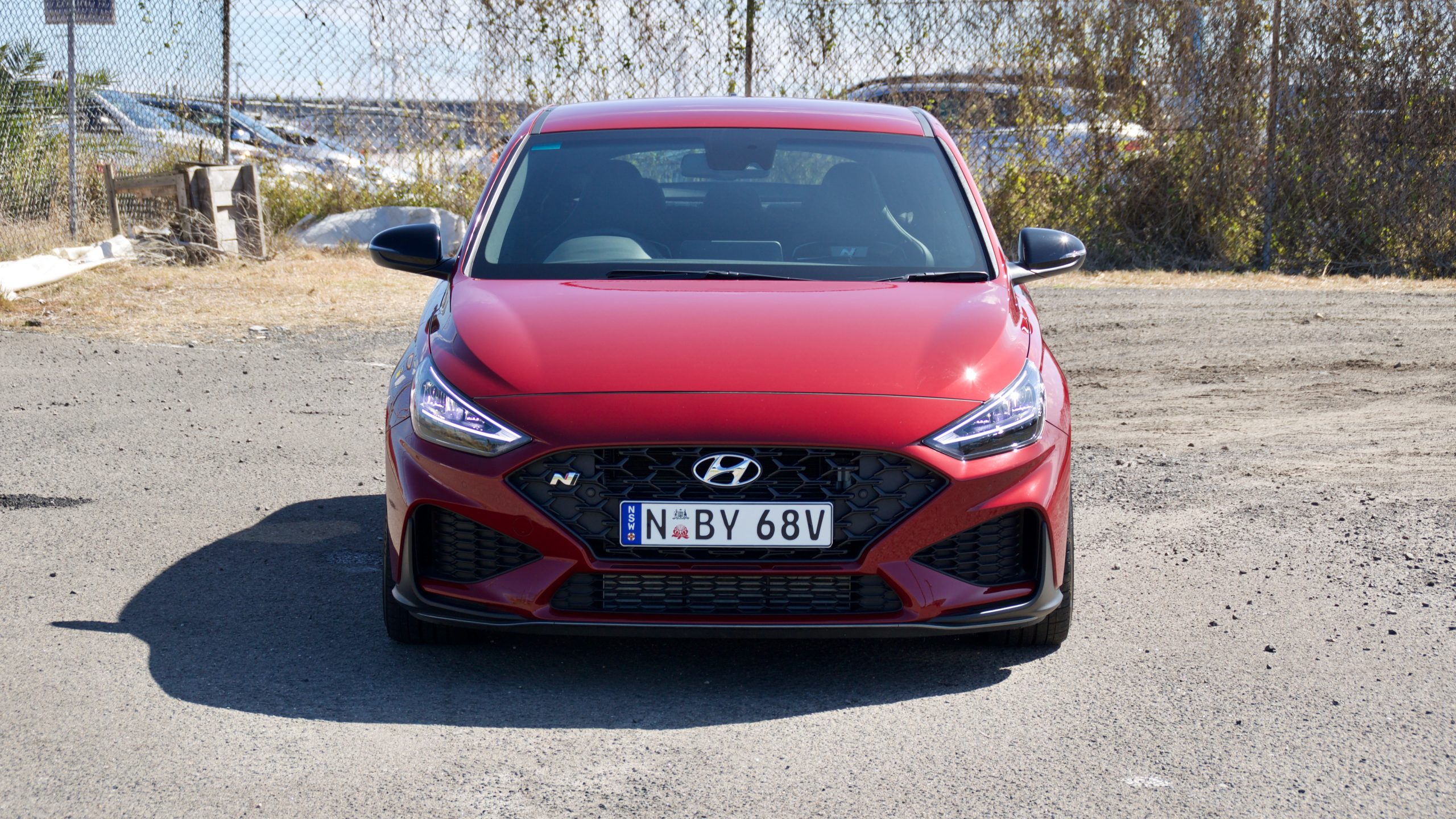
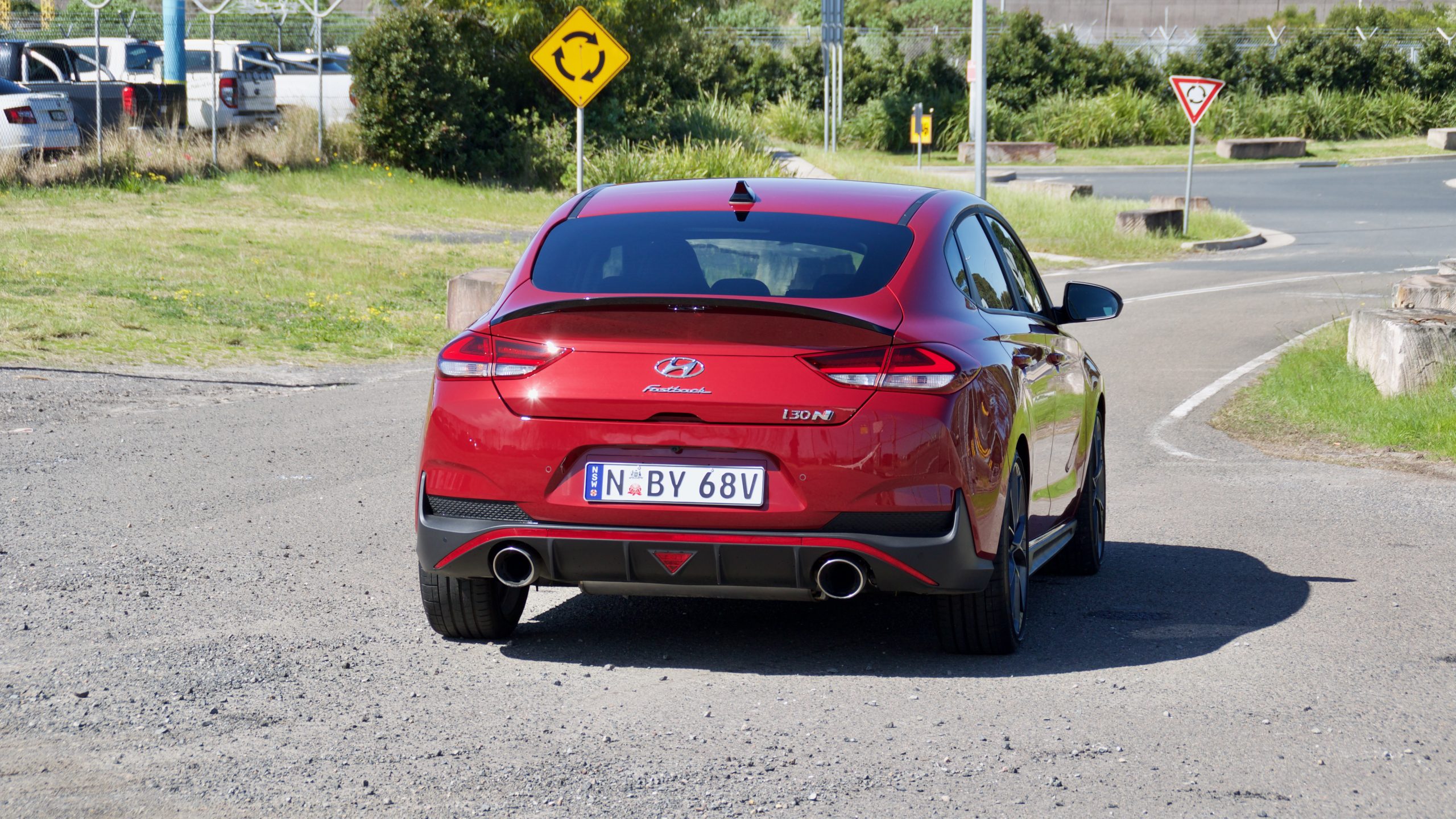
The i30 Fastback N has always been a peculiar beast. It combines all of the raw i30 N hatchback’s raw performance in a sleek liftback sedan body style, not too dissimilar to the Skoda Octavia. Quite simply, it looks more bespoke and special than the hatchback. With numbers so limited and with some dealer stock still floating around, should you be putting your name on the list to get one last i30 Fastback N before it goes extinct for good? Or should you simply buy the regular i30 N hatchback or the i30 N sedan? Let’s find out.
Price and Equipment: 9.0/10
Just last year, Hyundai Motor Company Australia CEO, Jun Heo said “We are delighted to introduce the i30 Fastback N Limited Edition for an exclusive number of lucky high-performance customers”. And boy did he mean exclusive, with not only a limited allocation of cars but some bumped up list prices too. The manual 2022 i30 Fastback N Limited Edition comes in at $49,000 before on-road costs, or exactly the same price for the i30 Sedan N Premium. This means that the i30 Fastback N is $1500 more expensive than the i30 N Premium manual hatchback at $47,500 before on-road costs. Hyundai is also offering an automatic version of the i30 Fastback N, equipped with a dual-clutch gearbox which will set you back $52,000 plus on-road costs. We managed to test both the manual and the automatic 2022 Hyundai i30 Fastback N, testing an example of each model.
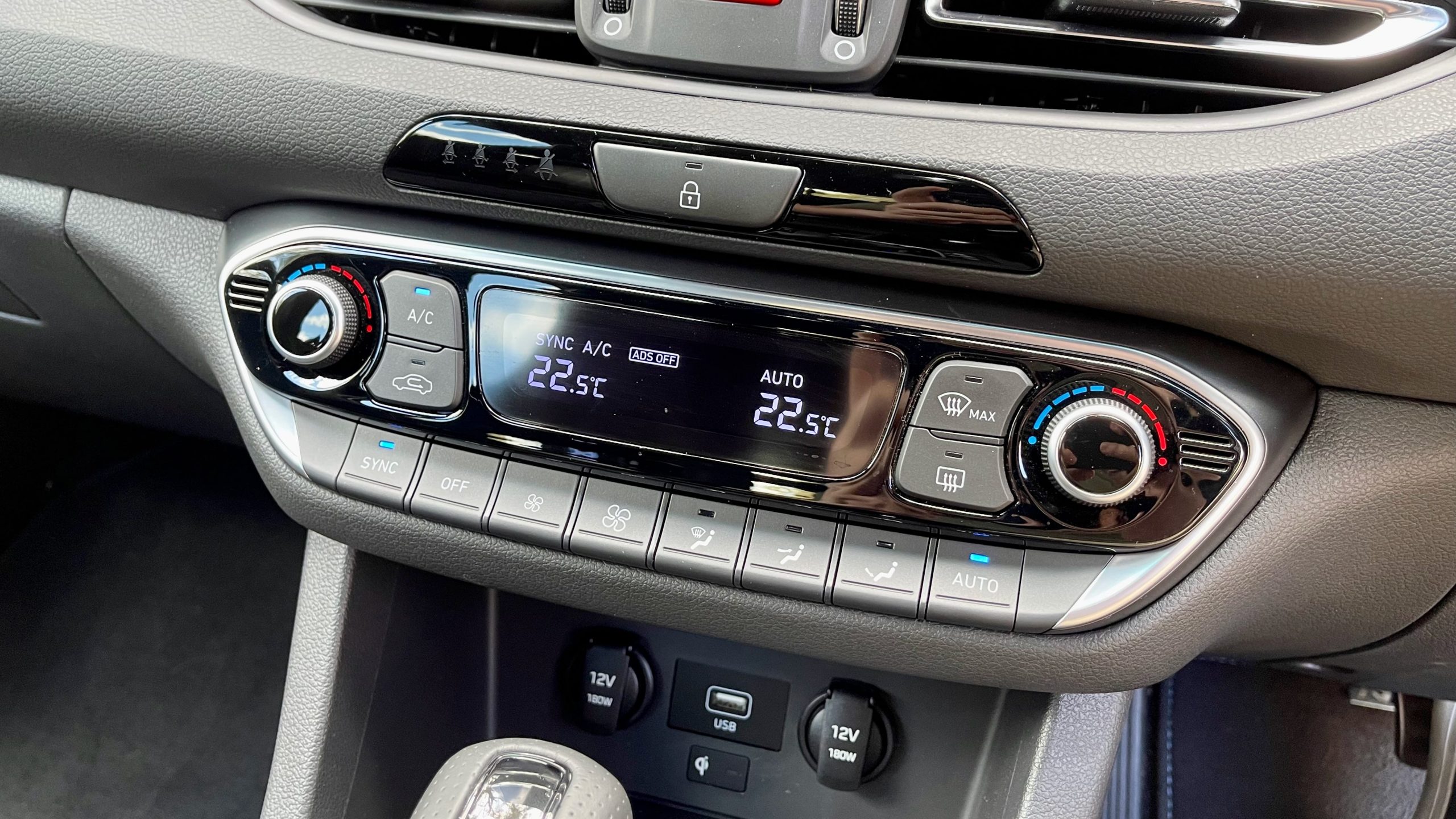
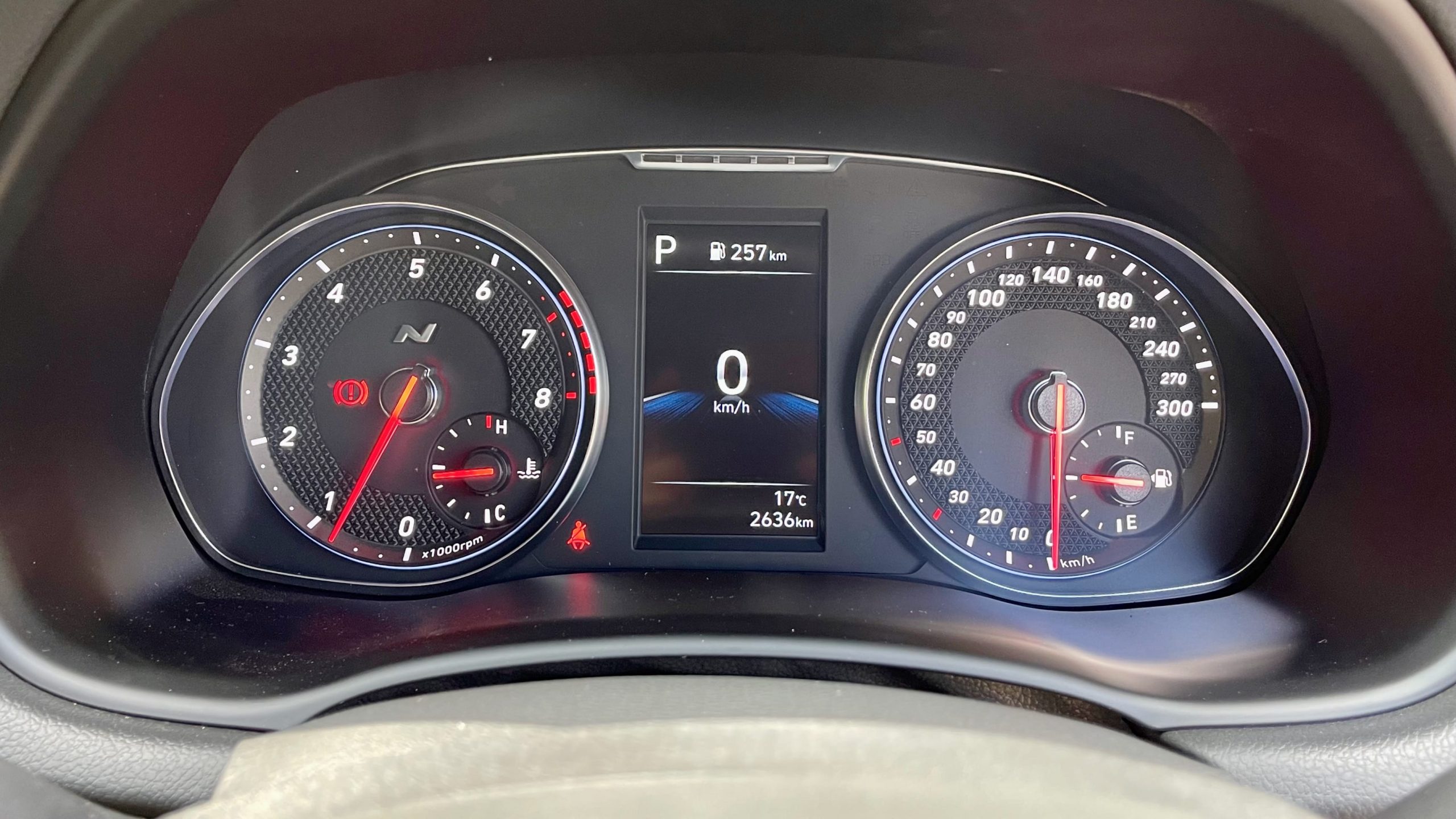
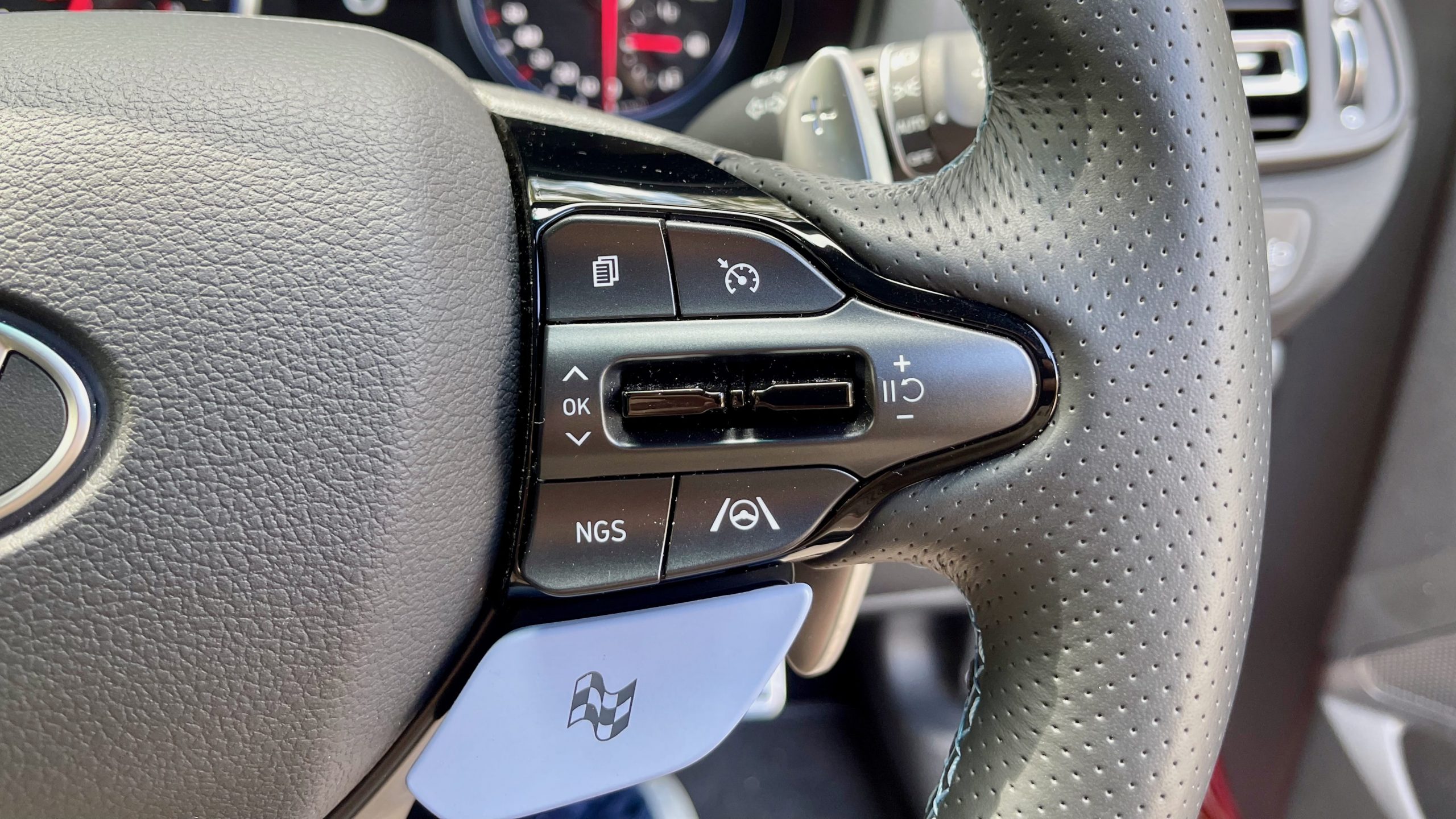
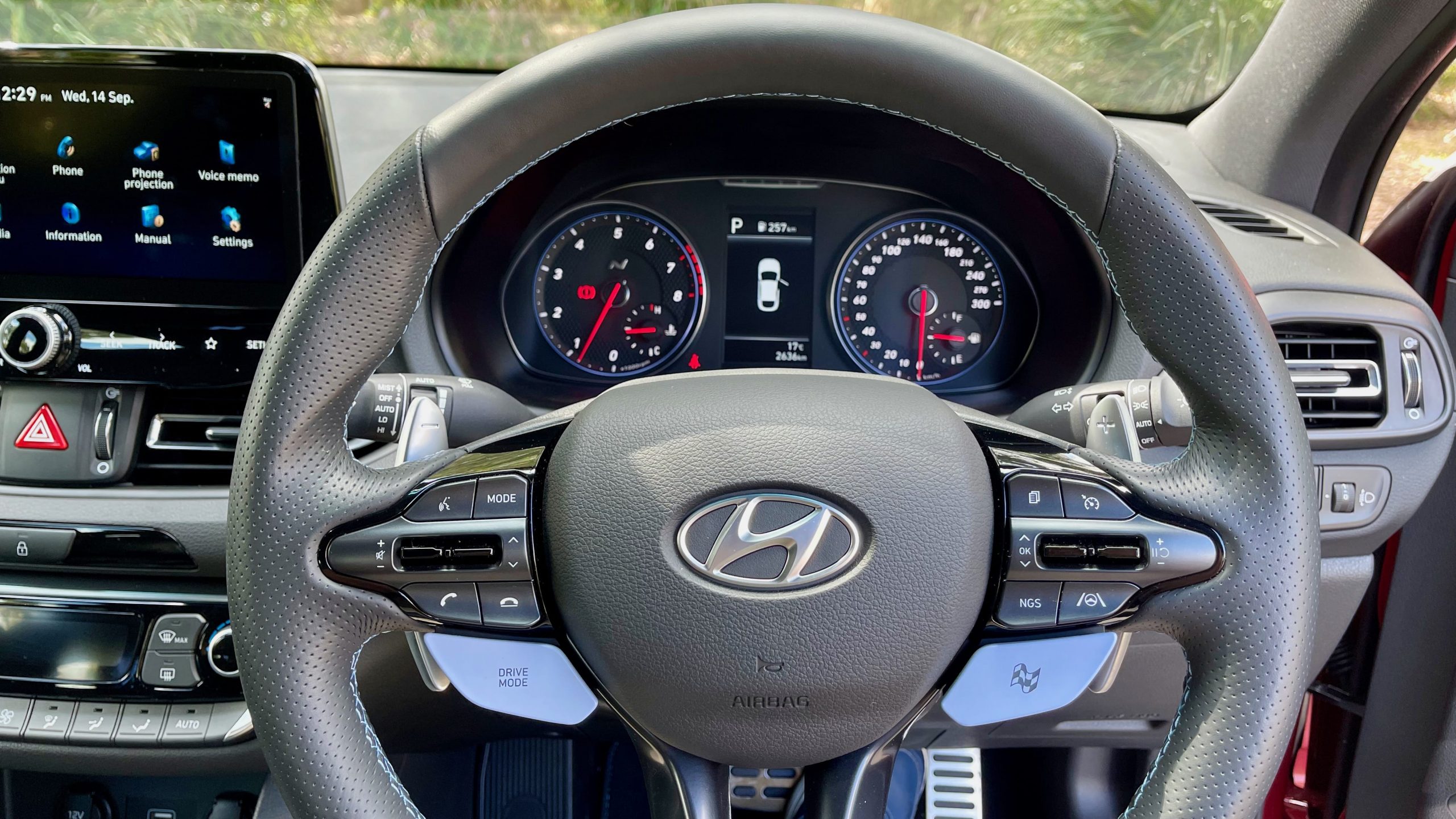
Standard kit on the 2022 Hyundai i30 N Fastback includes LED exterior lighting, auto lights and wipers, a 10.25-inch touchscreen with Apple CarPlay and Android Auto, digital radio, satellite navigation with live traffic updates, cruise control, dual-zone climate control, heated front seats and a heated steering wheel, keyless entry and start, auto-folding and heated mirrors, a wireless phone charger, an auto-dimming rear mirror and rear privacy glass.
Safety features include seven airbags, auto emergency braking (AEB) with pedestrian detection, driver attention warning, lane keep assist with lane follow assist, driver attention warning, tyre pressure monitoring, front and rear parking sensors, a reversing camera and an alarm. Oddly, much like the rest of the i30 N range, the Fastback misses out on radar cruise control.
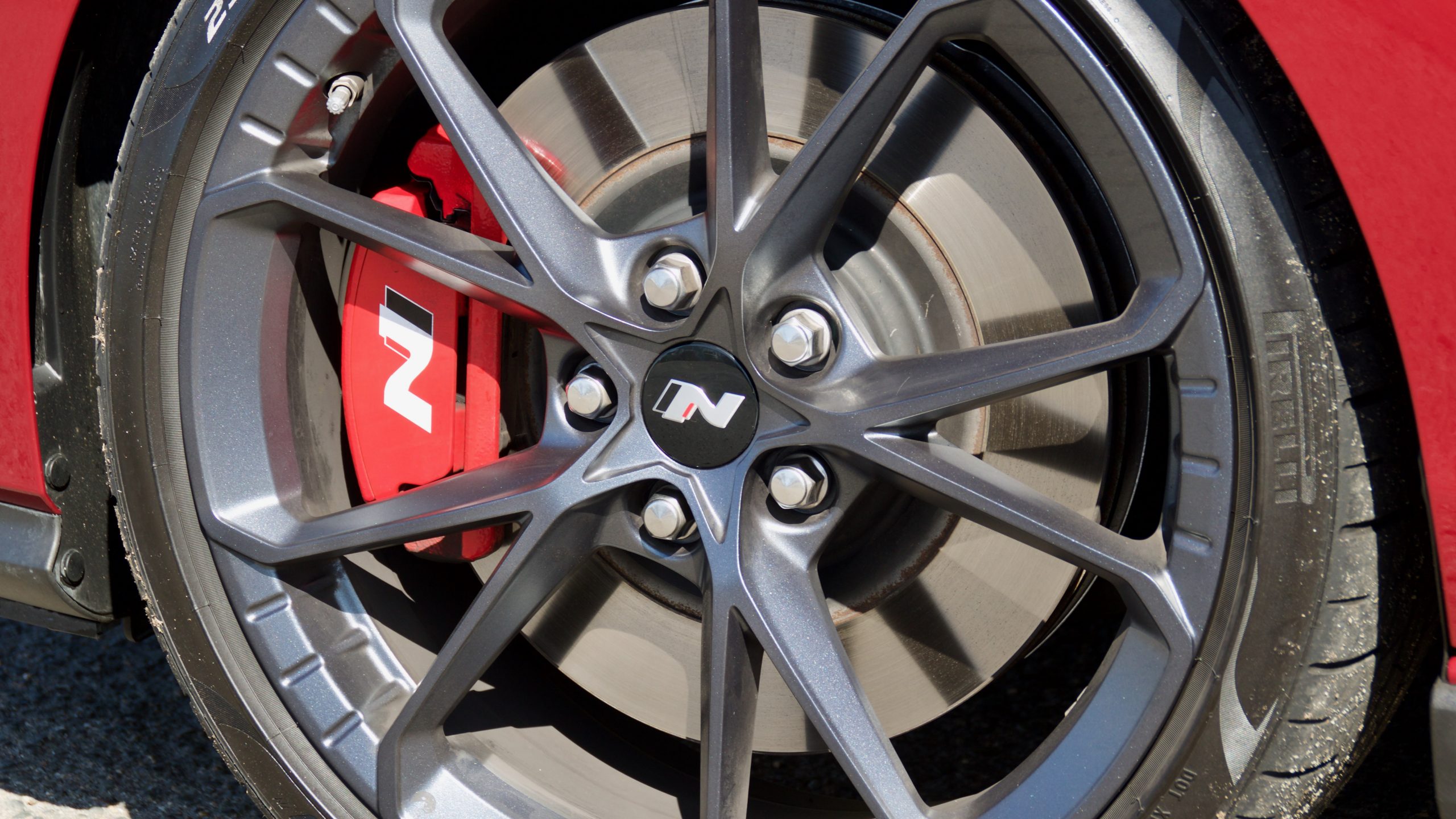
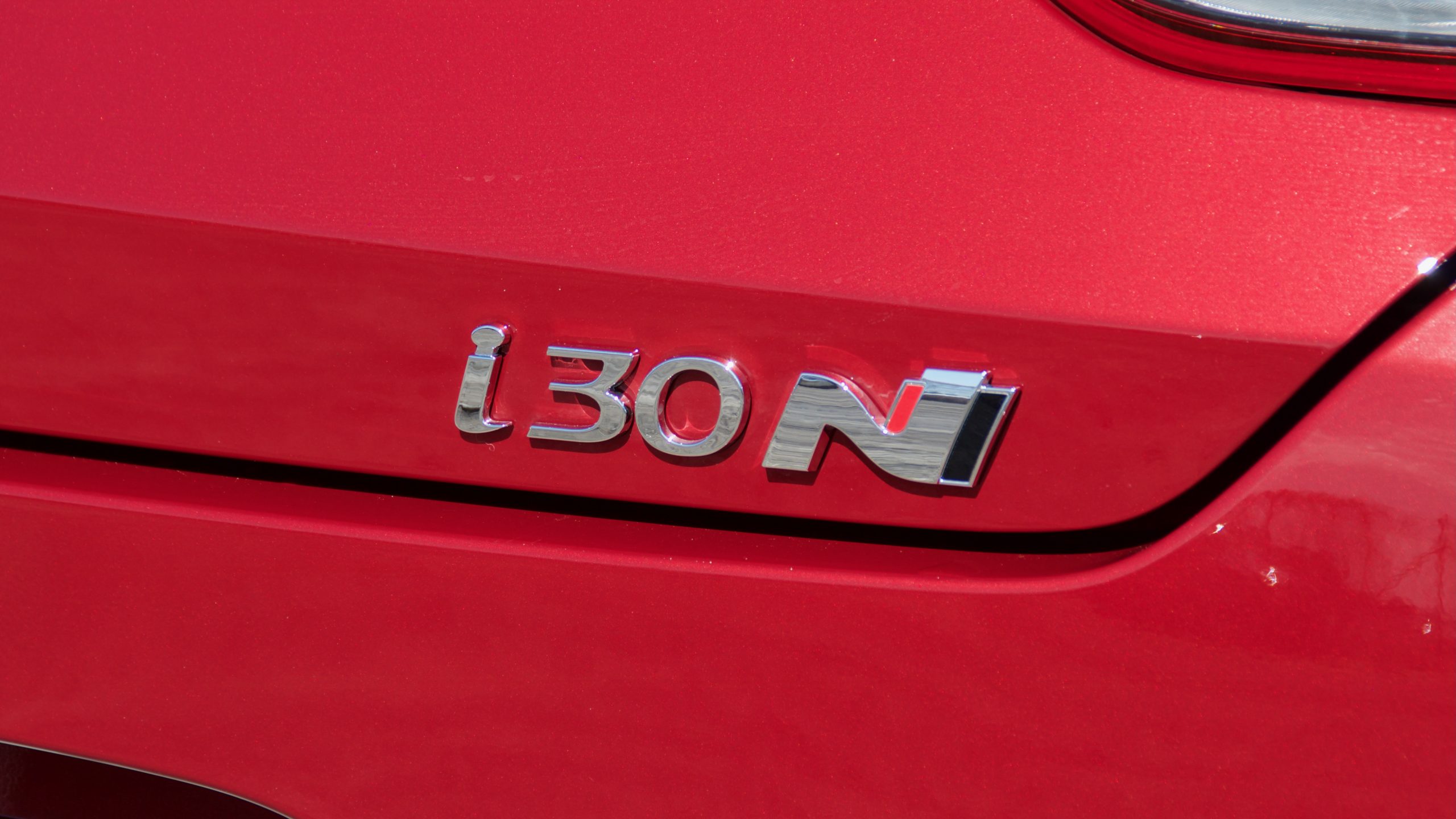
N-specific performance features include forged 19-inch alloy wheels, an active exhaust, adaptive suspension, an electro-mechanical limited-slip differential, performance brakes, a rear strut brace, different driving modes with launch control, rev-matching functionality, ’N Light’ seats with suede and leather upholstery, Pirelli P-Zero HN tyres and alloy sports pedals.
Standard colour choices include ‘Engine Red’, ‘Polar White’, ‘Shadow Grey’ and the company’s signature ‘Performance Blue’, while premium options ($495 extra) include ‘Sunset Red’, ‘ Dark Knight’ and ‘Phantom Black’. Also optionally available is a $1,500 panoramic sunroof.
Performance and Economy: 8.0/10
Hyundai’s N division really delivered with not only an impeccable engine under the bonnet, but a brilliant set of transmissions and tons of driver customisation to tailor the i30 Fastback N’s driving experience. The familiar 2.0-litre turbocharged petrol engine pumps out an impressive 206kW and 392Nm of torque available between 2100 and 4700rpm. That’s enough power to take the i30 Fastback N manual from 0-100km/h in just 5.4 seconds, and the automatic i30 Fastback N DCT in an even quicker 5.3 seconds.
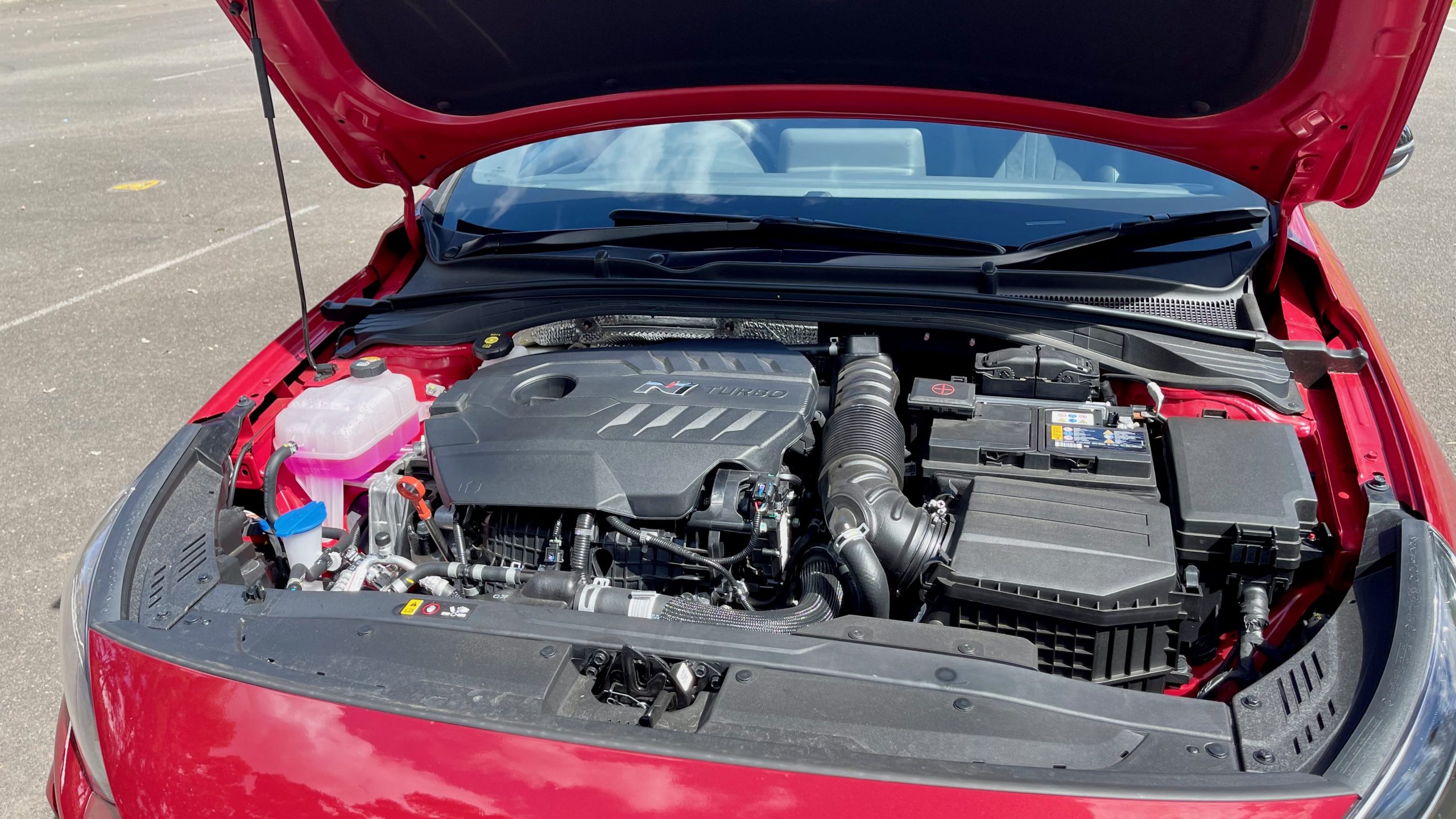
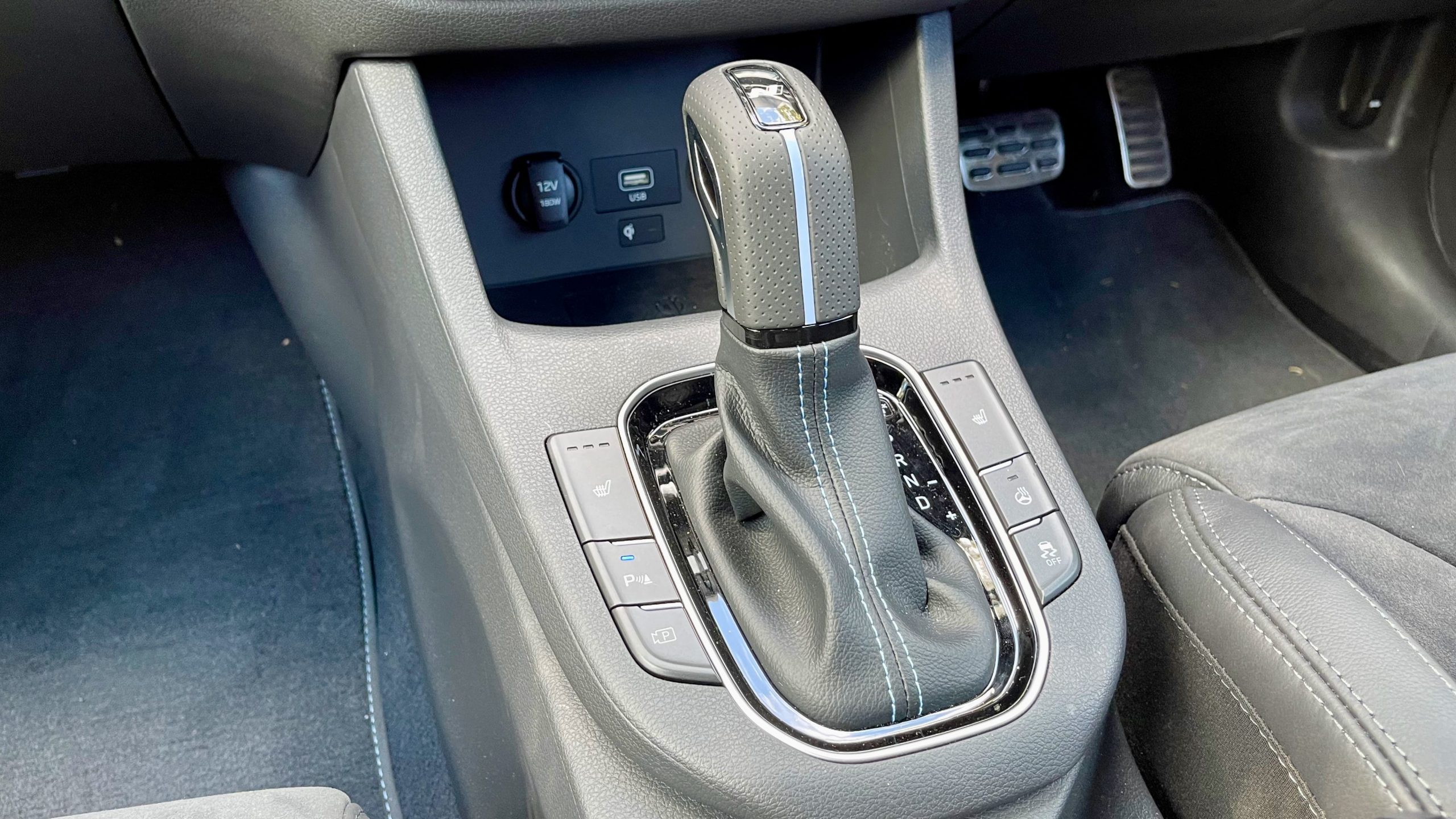
A big caveat here however, asking any i30 N, Fastback or hatchback to do any sort of spirited launch from a standing start creates a ton of wheelspin and more worryingly, axle tramp of seismic proportions. It’s certainly not a good feeling trying to get off the line with the entire engine jumping up and down, as if it wants to be set free. In the wet, the i30 Fastback N has to be driven with the utmost caution when setting off, so as not to induce some rather violet axle tramp. We found the automatic to be slightly better than the manual in this regard.
Once rolling, the engine is an absolute peach on the road, and thanks to an updated turbocharger and intercooler for extra grunt, proves just how much fun a fast small car can still be these days. The engine is superbly linear in its power delivery, picking up from low revs with little turbo lag, before rocketing all the way to the redline with a solid thrust. Whether its a match for the 180kw EA888 2.0-litre turbocharged unit found in cars such as the Volkswagen Golf GTI and Skoda Octavia RS might be a debate for another day, but we think Hyundai actually has the edge here in the battle of the turbo four-cylinder units.
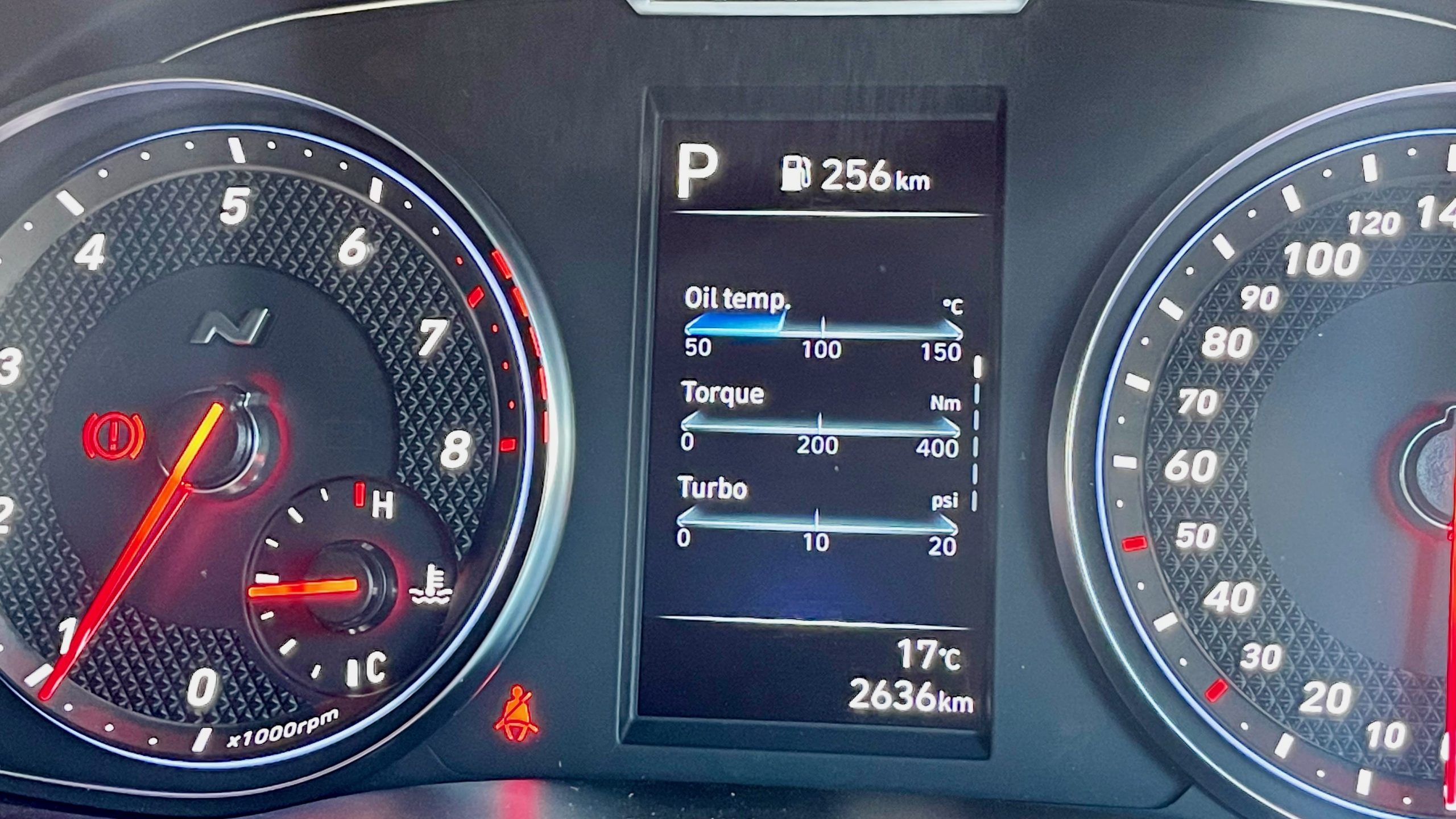
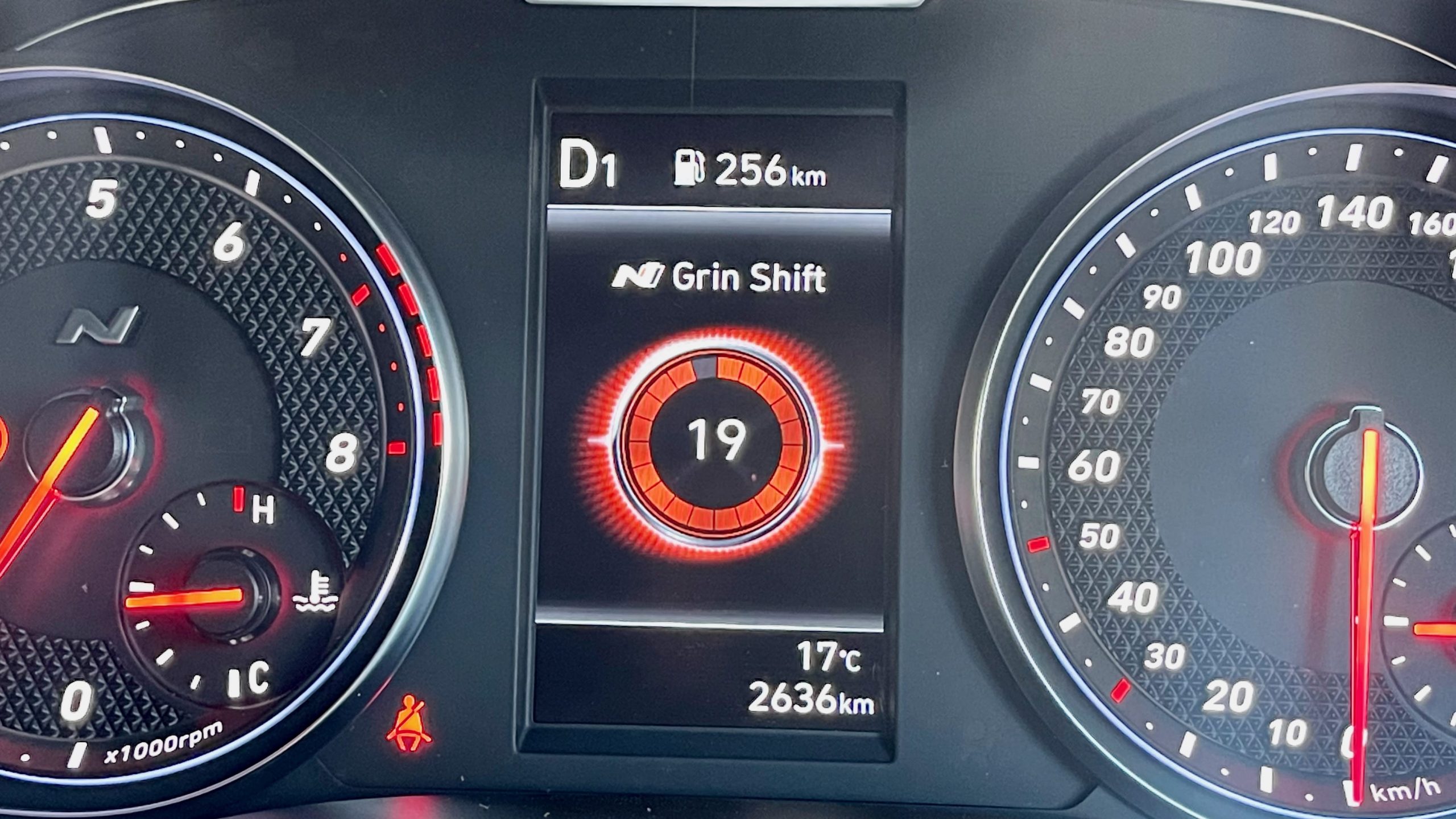
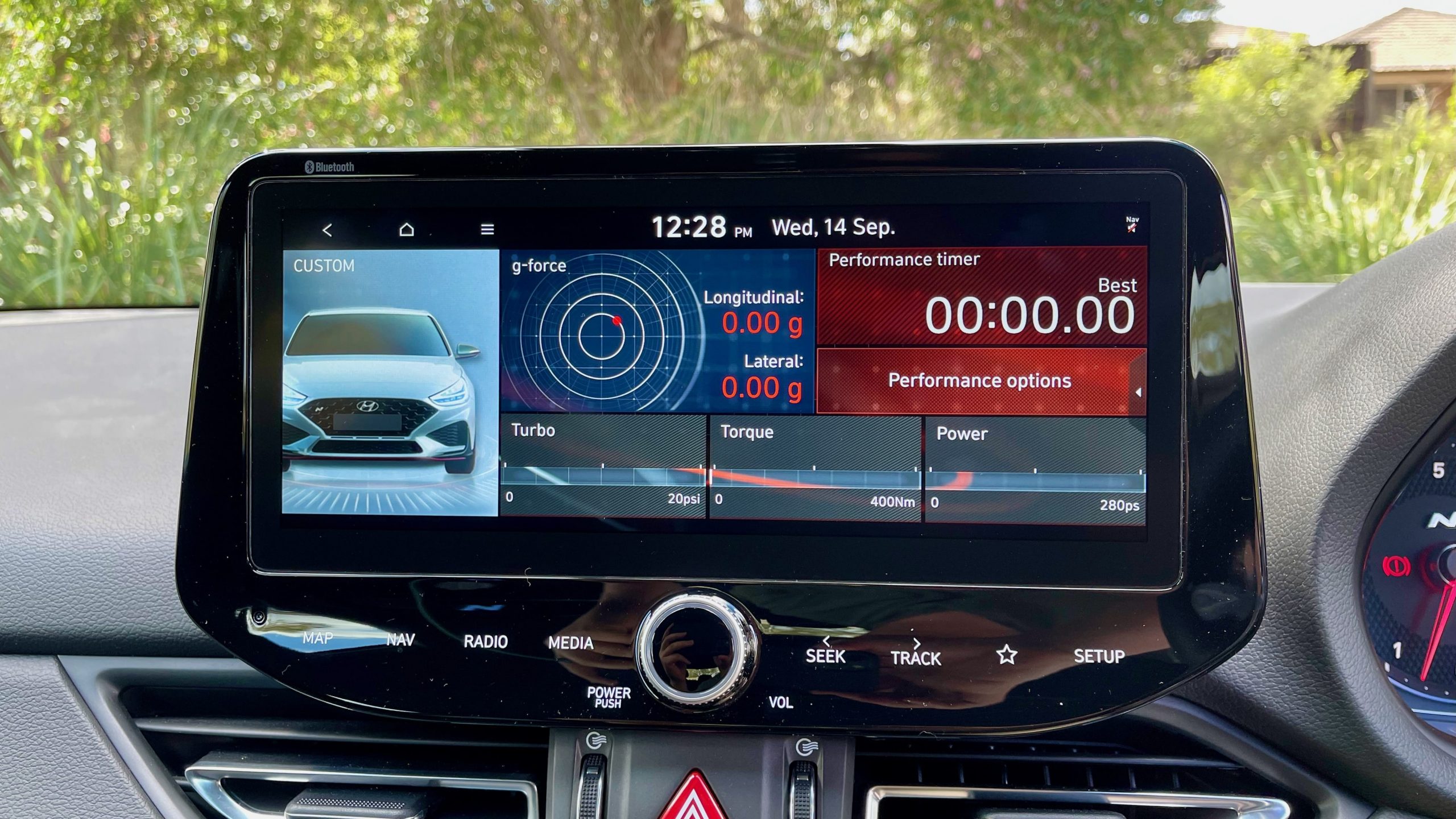
Hyundai has also the nailed the ability for the driver to tailor the engine’s response to their liking. With Eco, Normal, Sport, N and N Custom drive modes, the engine’s response, the urgency of the rev-matching in the manual, as well as exhaust sound can all be tinkered by the driver. It all just works brilliantly well in the i30 Fastback N, much like we have seen in our previous drive in the i30 N hatchback.
We’re happy to see that the i30 N’s trademark bark, pops and bangs are all still here, with the exhaust sounding as fruity as ever. We’re still not quite sure how Hyundai managed to get away with such a loud exhaust from stock, but we certainly won’t be ones to complain.
Having had to chance to drive both the manual and auto versions, we’re happy to report that both variants of the i30 Fastback N are equally great to drive. The manual has a engaging, sweet and snappy action which allows drivers to really gel with the car, swapping cogs with precision and making the most of the Hyundai’s excellent rev matching system on downshifts. The clutch is sadly a little vague as we’ve reported before, making stalling a little to easy, especially for novice drivers.
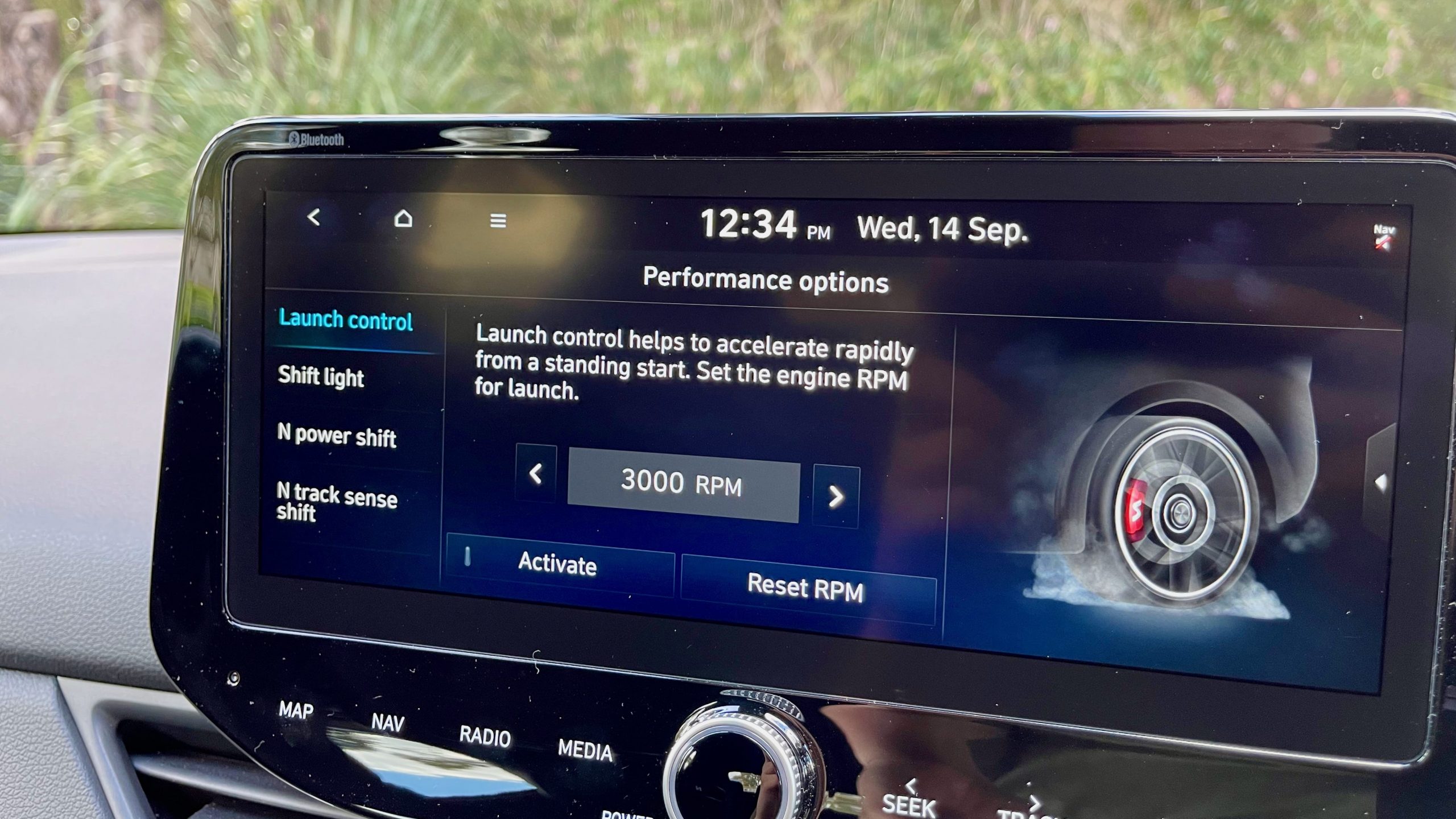
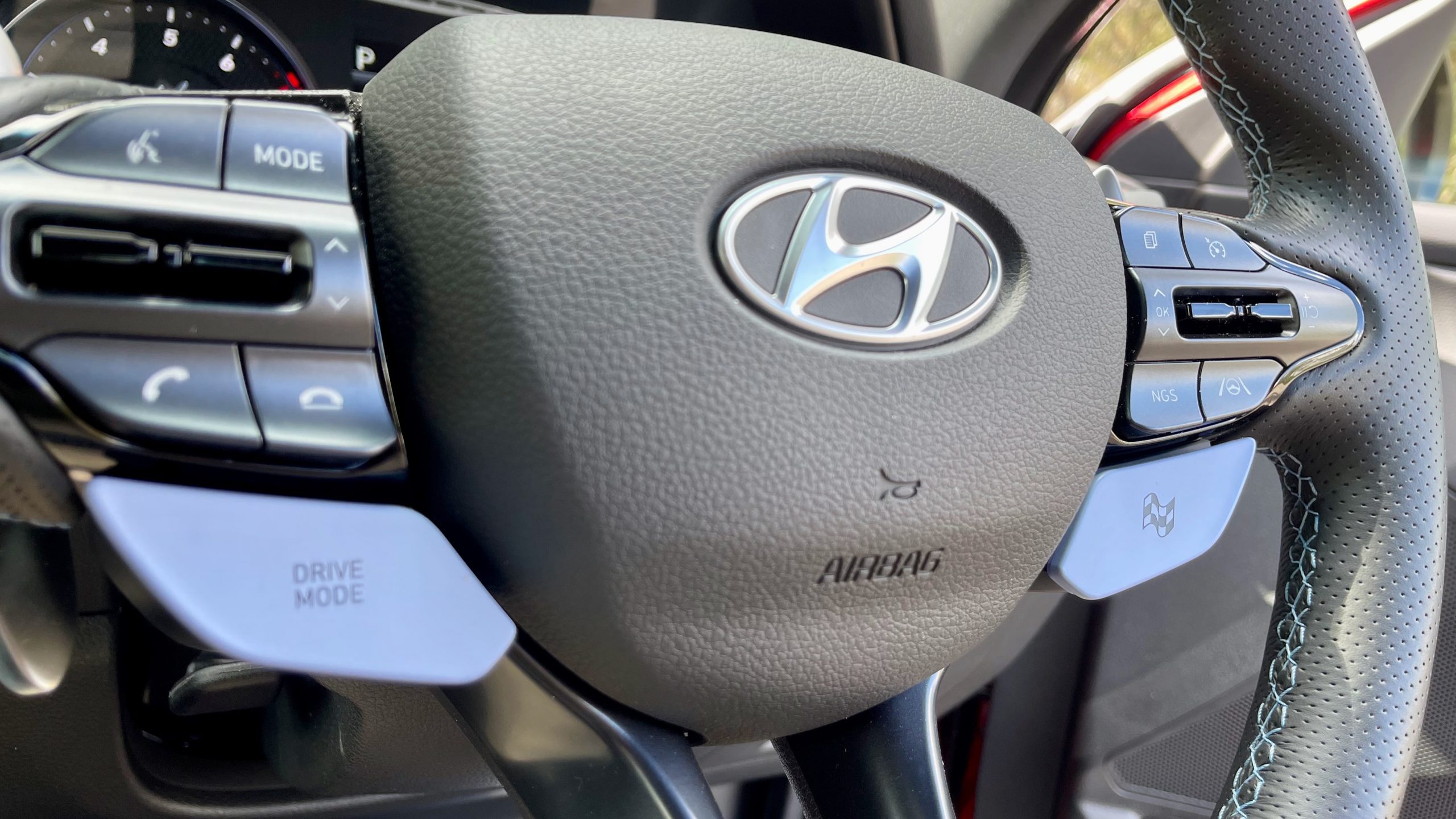
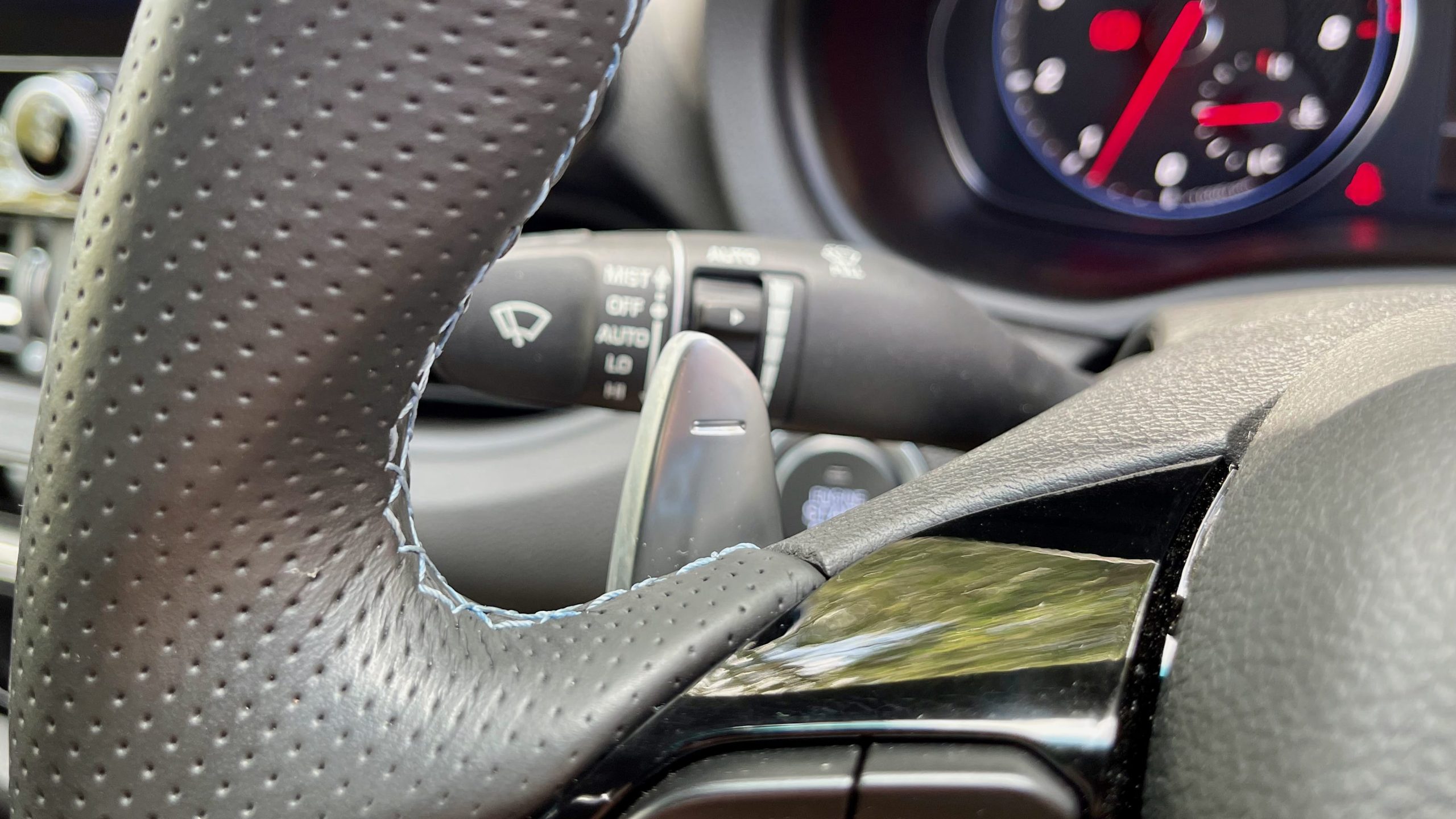
The dual clutch automatic makes the Hyundai i30 Fastback N even faster, with incredibly quick and sharp upshifts when demanded. When driving normally around town the gearbox does an admirable job of pretending to be a torque converter by slurring upshifts and creeping forward naturally, even on hills. Once again, just like the engine, it’s a superior unit to Volkswagen’s DSG automatic found in the Golf GTI.
Both the manual and the auto Hyundai i30 Fastback N models returned a fuel consumption average of around 11.0L/100km according to the trip computer after a mixture of city and freeway driving. Hyundai claims the models use a total of of 8.5L/100km on the combined cycle, a figure which can be matched with predominantly freeway driving and the lack of a lead foot, which is oh so hard to do in a car with this much performance.
Ride and Handling: 9.0/10
Put simply, the i30 Fastback N is an absolute riot to drive, much like its hatchback sibling. No surprises here. The adjustable dampers work beautifully, giving the i30 Fastback N a dual personality. On one hand, they offer a comfortable ride in their softest setting, giving the i30 Fastback N a firm but controlled ride that’s never harsh. Dialed up to their firmest setting, such as in N-mode, the car rides like a skateboard with immediate responses to the road and steering inputs. If you ever wanted to see what a go-kart feels like on a public road, this would be the setting to use. Safe to say, this is the suspension setting to use on only the smoothest of roads, or on a racetrack.
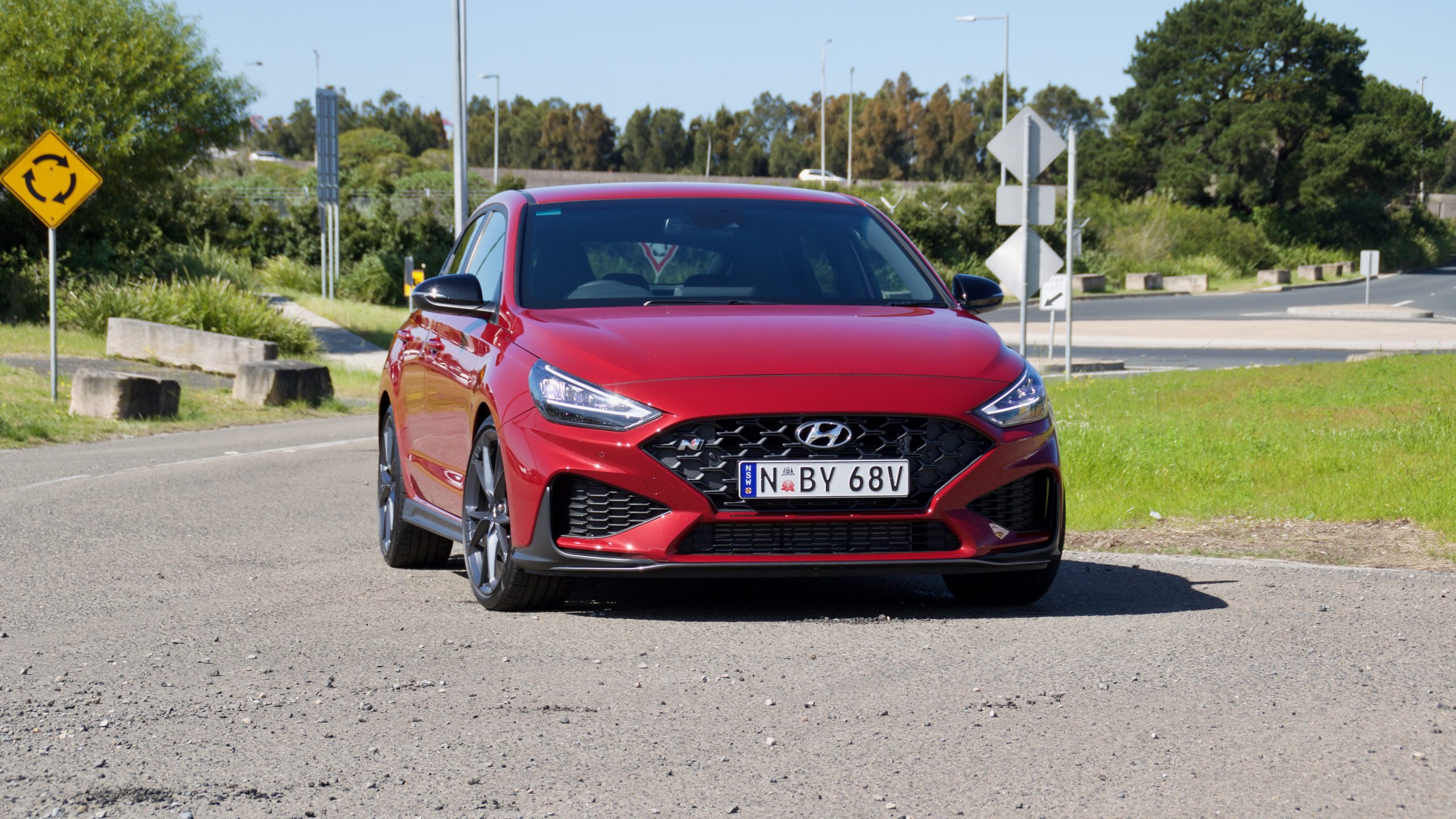
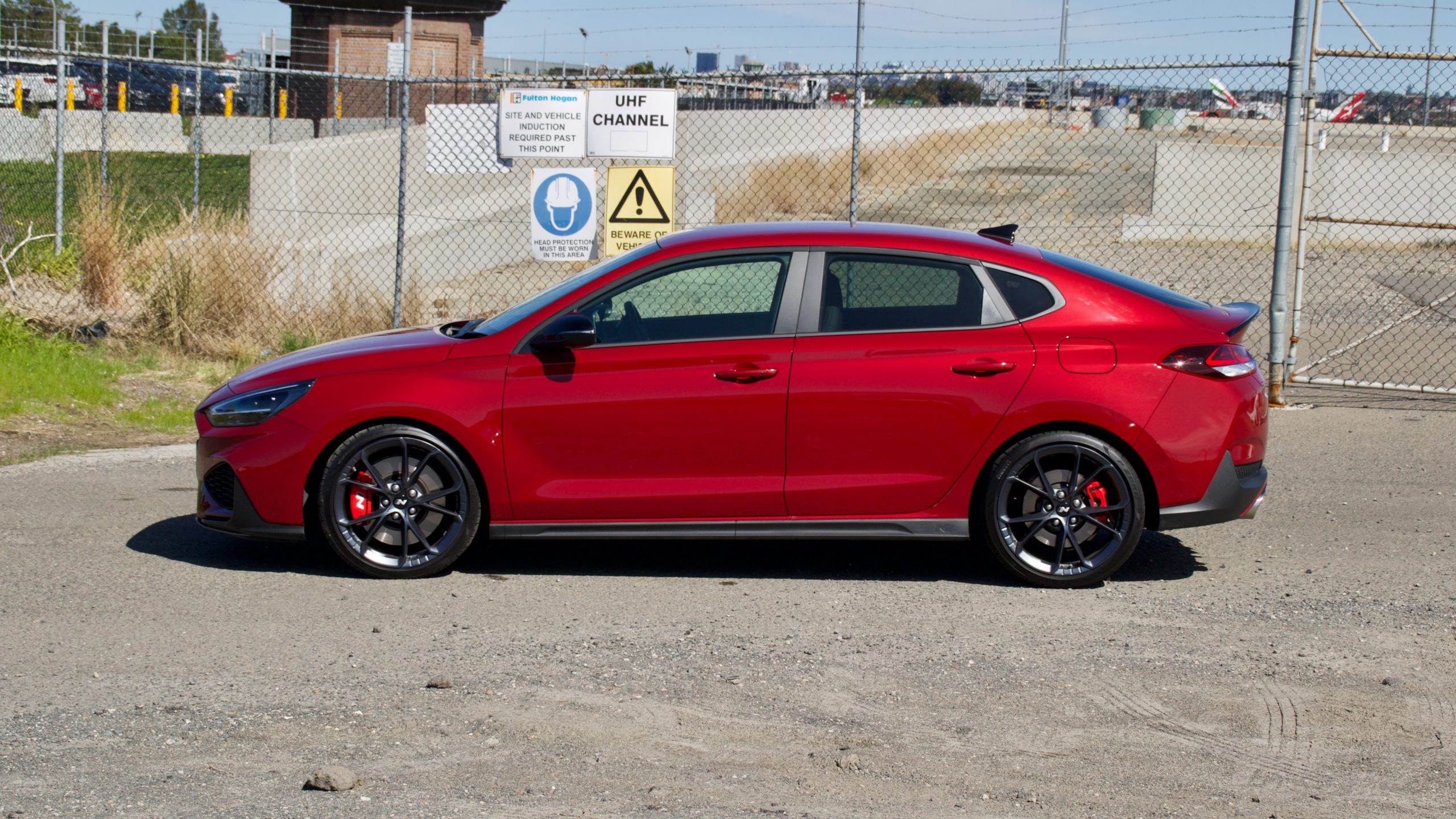
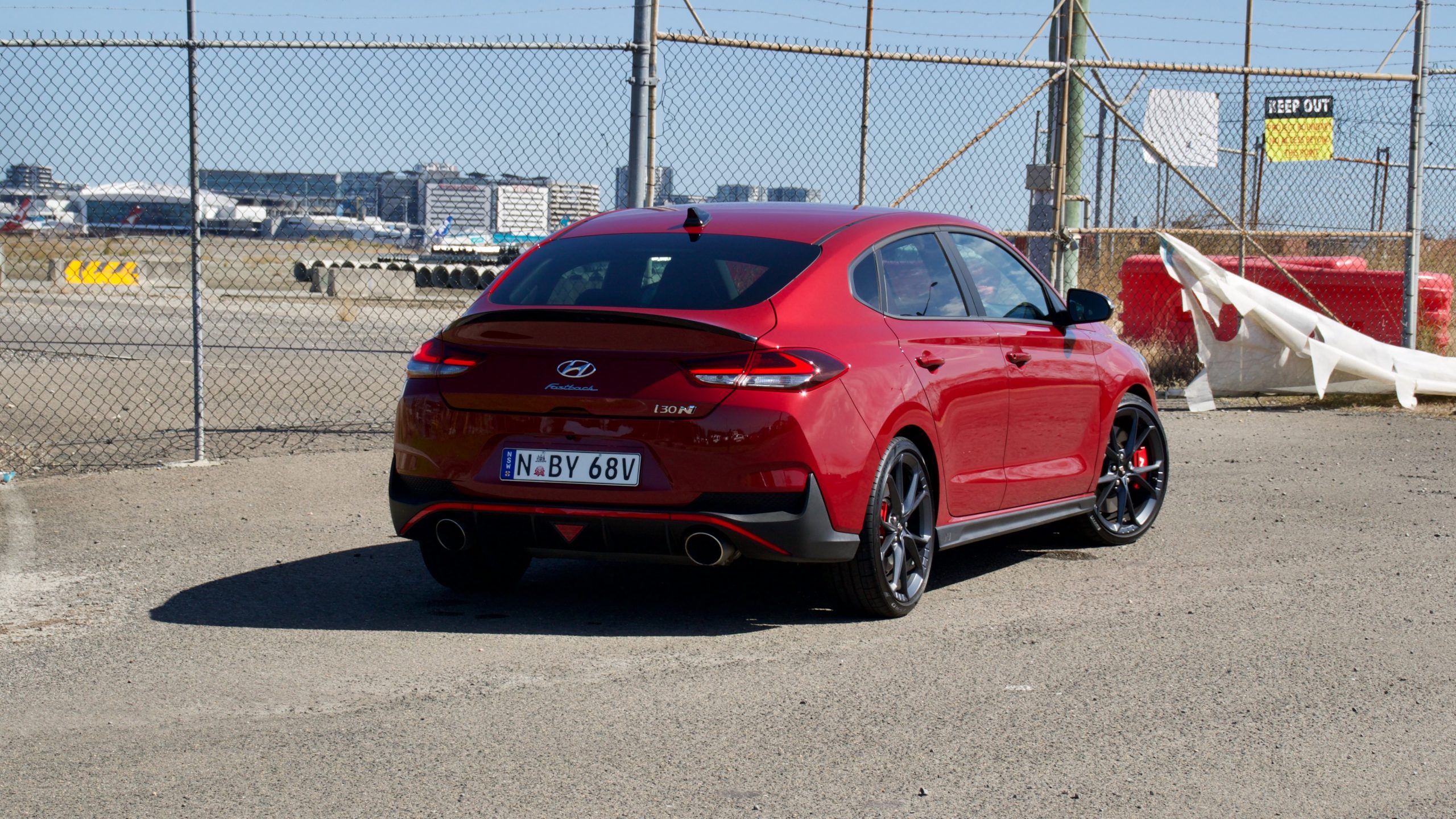
Through corners the Hyundai i30 Fastback N hangs on as if on rails, the Pirello P Zero HN rubber unyielding to forces of physics. It really is one of the greatest front-wheel drive cars ever made. There we said it. The steering feels accurate and feelsome, especially in its heaviest setting the steering. The i30 Fastback N turns in aggressively and builds grip confidently, before the e-LSD is asked to funnel the engines power to the wheel which can best take it. It all just works seamlessly and brilliantly.
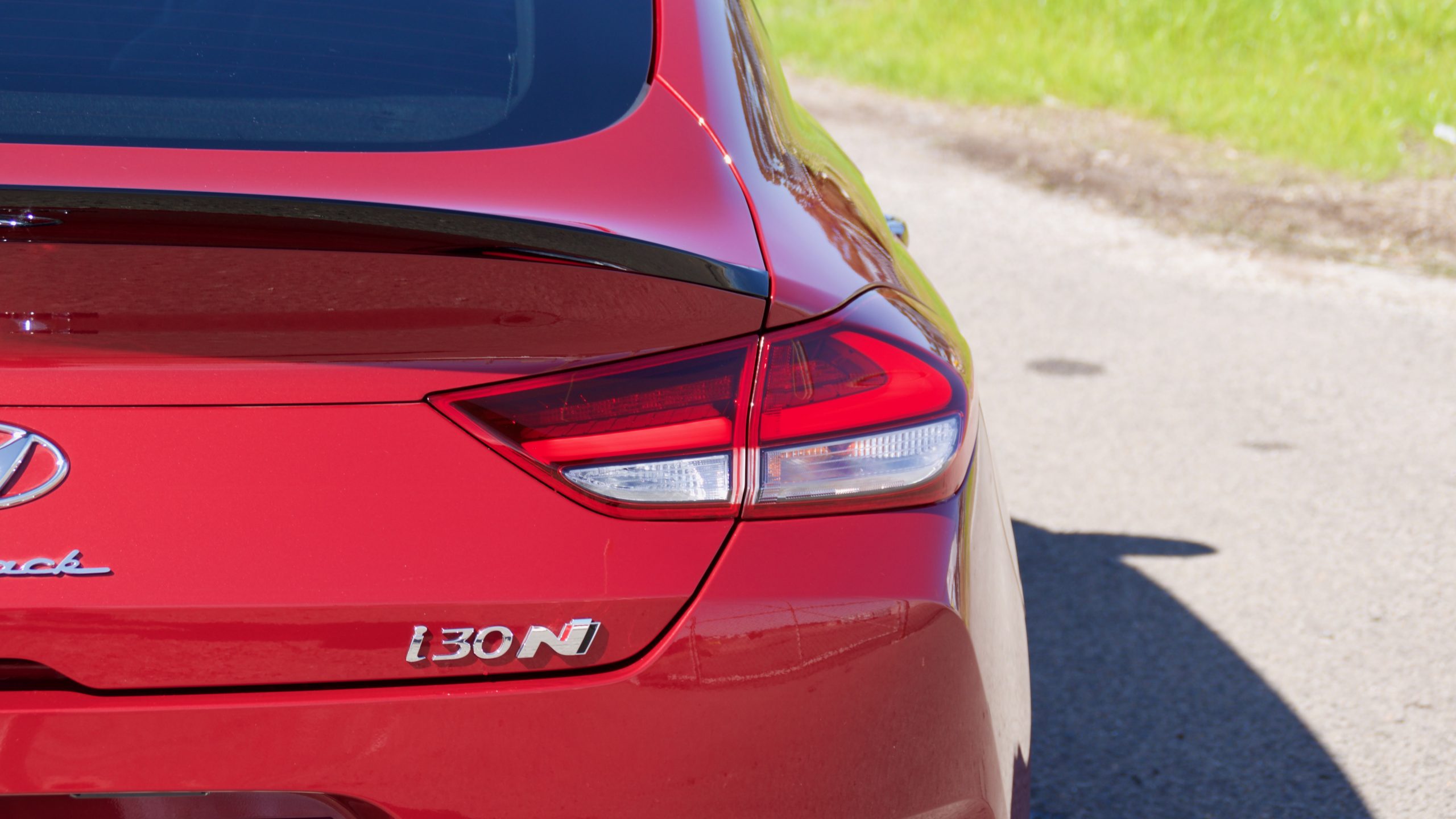
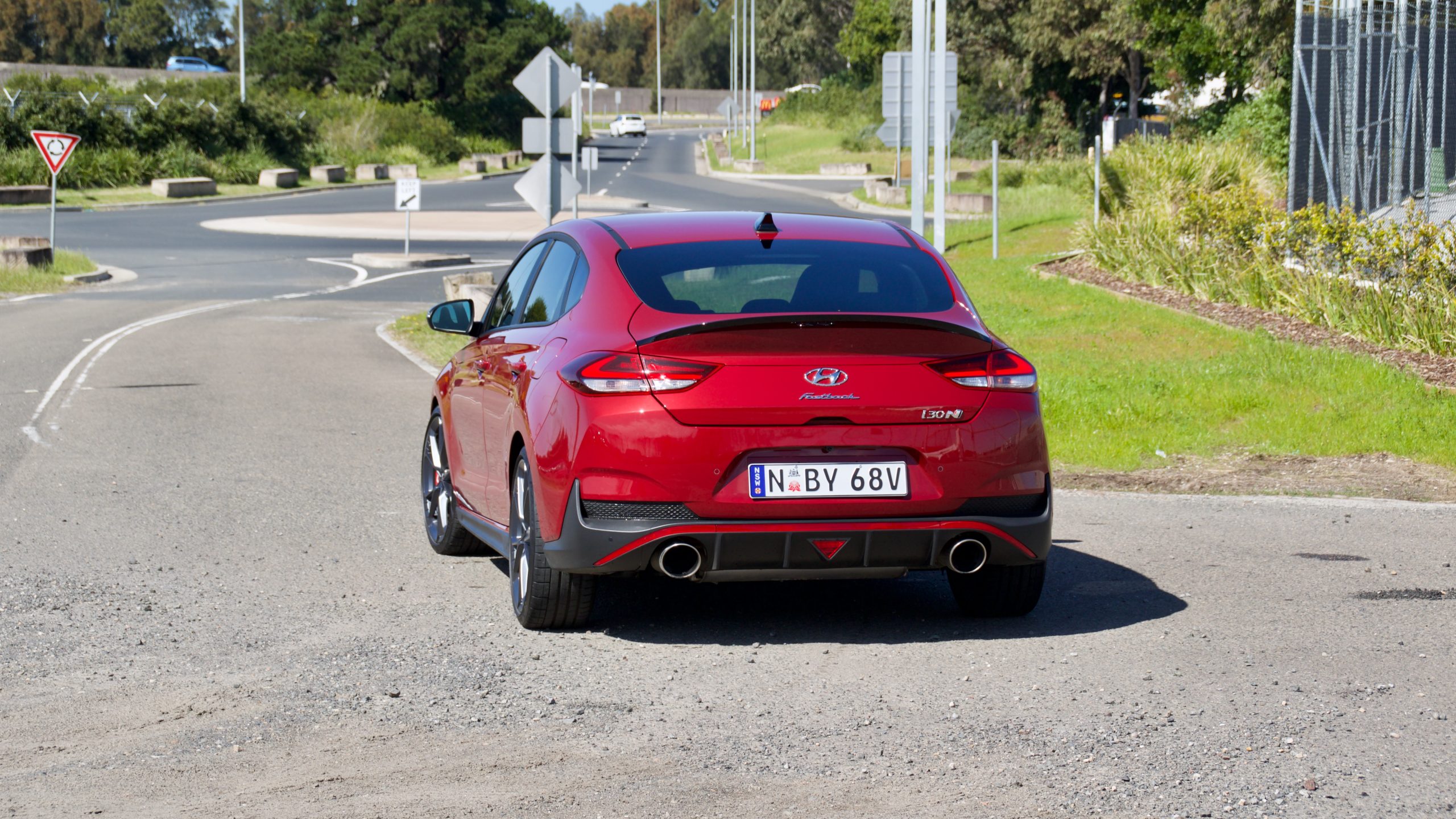
2022 brought a suspension retune for the i30 N range, and the Fastback has also benefited from improved suspension geometry, new damper and spring rates as well as some new forged alloy wheels, which save a total of 14.4kg over the regular cast alloy units. Even the seats have been made to be as light as possible, saving 2.2kg as well. The exposed brace in the boot further shows just how focused Hyundai’s N division engineers where when designing this car, and underscores just what a great car this really is to drive.
Interior and Practicality: 7.5/10
The purist driver will see the i30 Fastback N’s interior as simple, with all of the essentials needed in a sports car. The steering wheel falls beautifully to hand, has all the right buttons needed to swap drive modes on the fly and the seating position is spot on with the driver sitting in the driver’s seat, not on it.
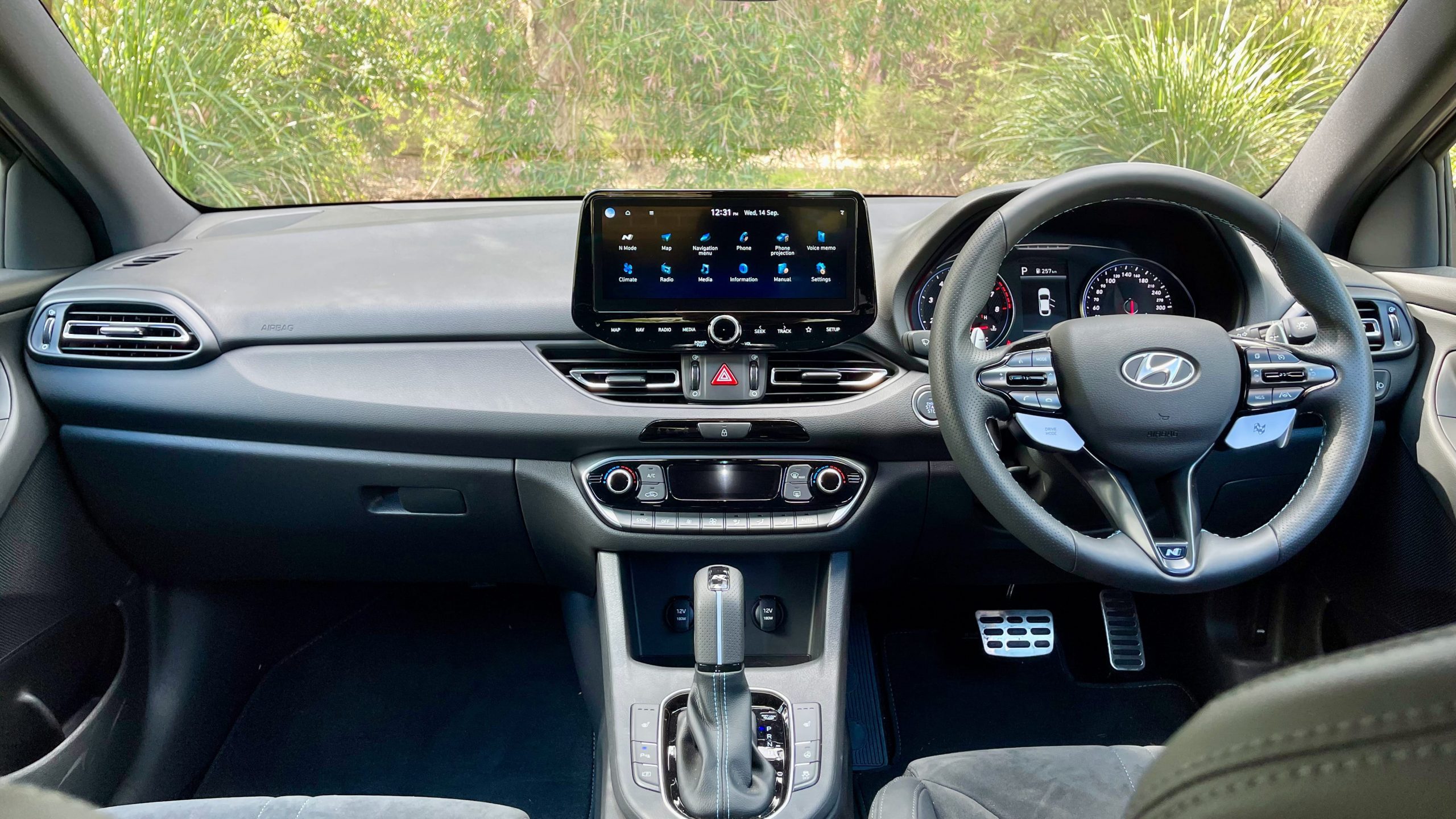
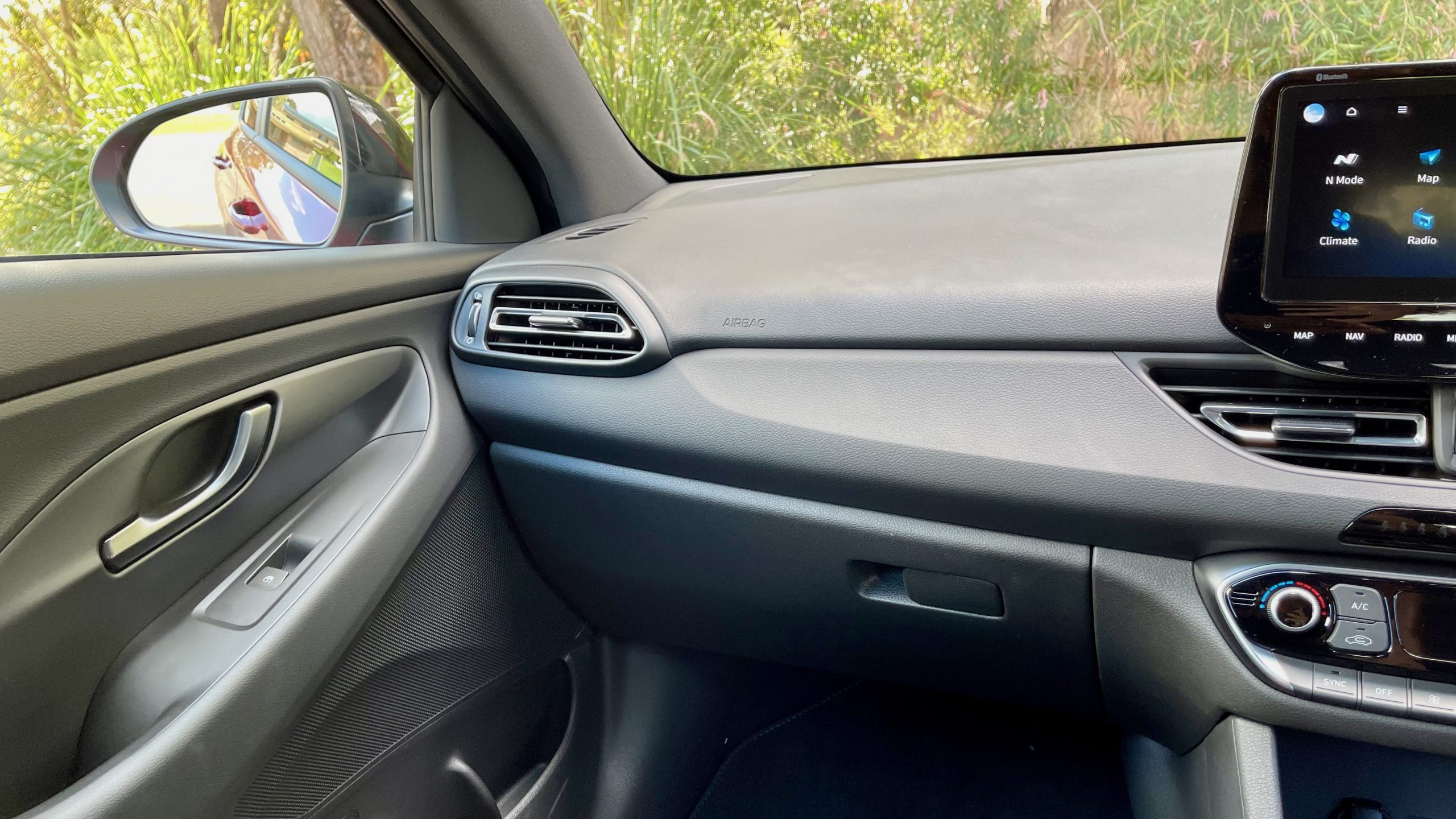
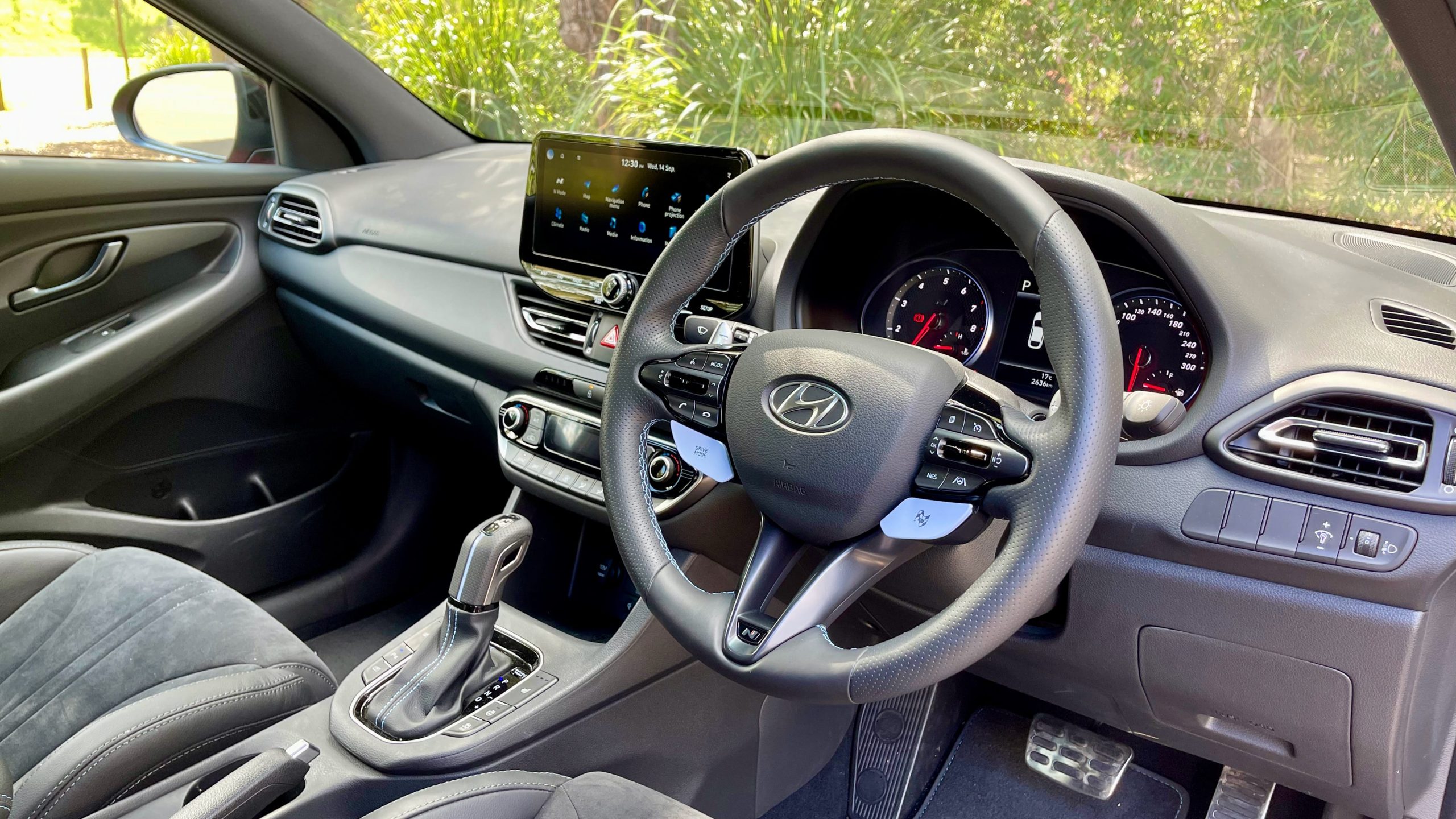
Others might be a little more critical of the interior. Rivals such as the Volkswagen Golf GTI and especially the Skoda Octavia RS have interiors that look and feel premium than the i30 Fastback N. The interior on the Hyundai is simply very dark and bland, with not much going quality wise either. Yes the dash is soft in places and the doors padded, along with a quilted A pillar, but elsewhere you’d be forgiven for thinking the i30 Fastback N is almost identical to a base model i30 Active costing around half of its purchase price. Take the plastic, unwrapped handbrake for example, or the black door handles.
The 2022 Hyundai i30 Fastback N’s infotainment system is really intuitive to use and with 10.25 inches of screen real estate, it’s well sized. The system features wired Apple CarPlay and Android Auto and feels responsive with good graphics. We like that there’s a dedicated N “app” which allows driver’s to see a myriad of performance metrics, to track lap times and to adjust the various performance settings on the car.
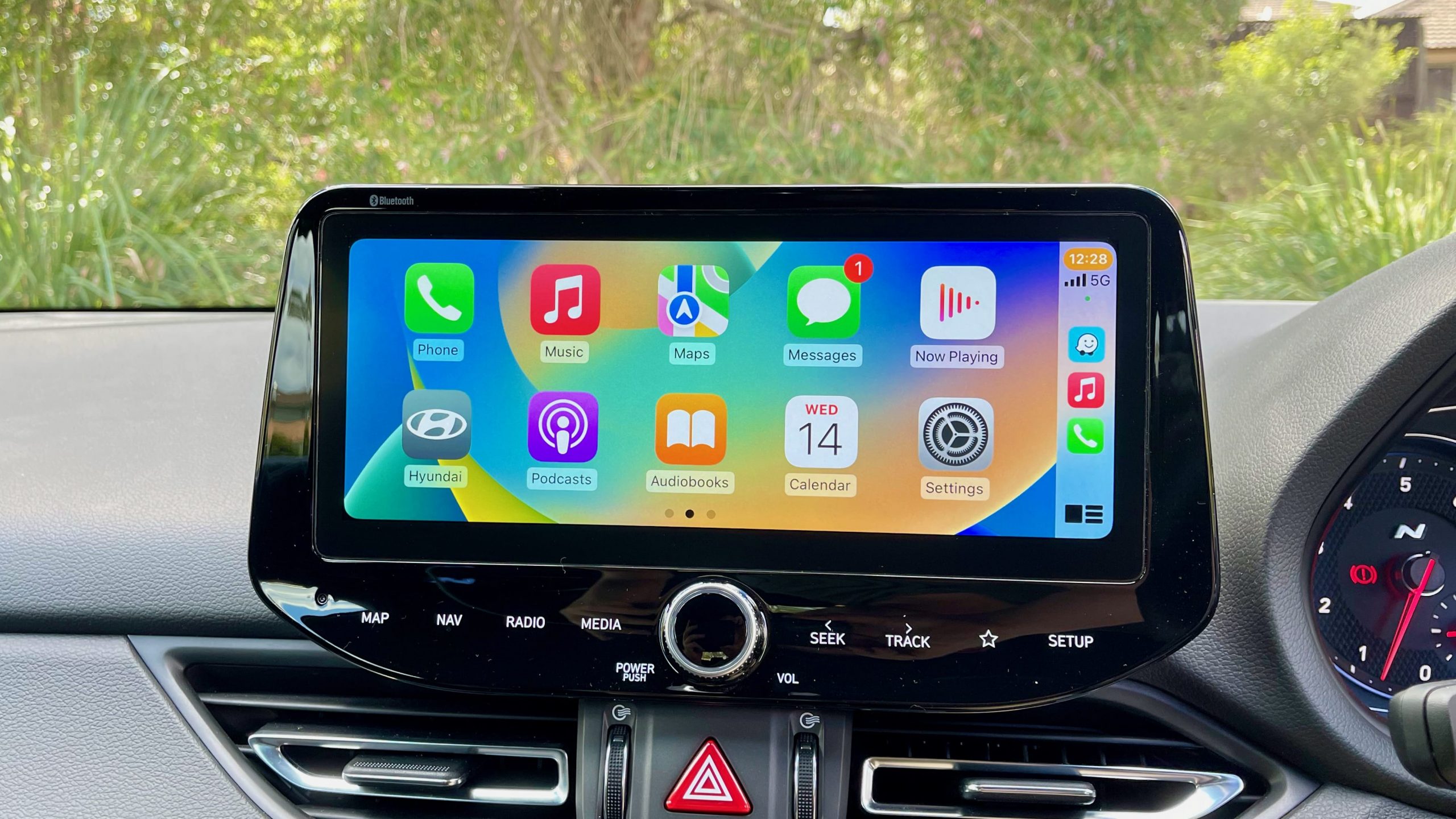
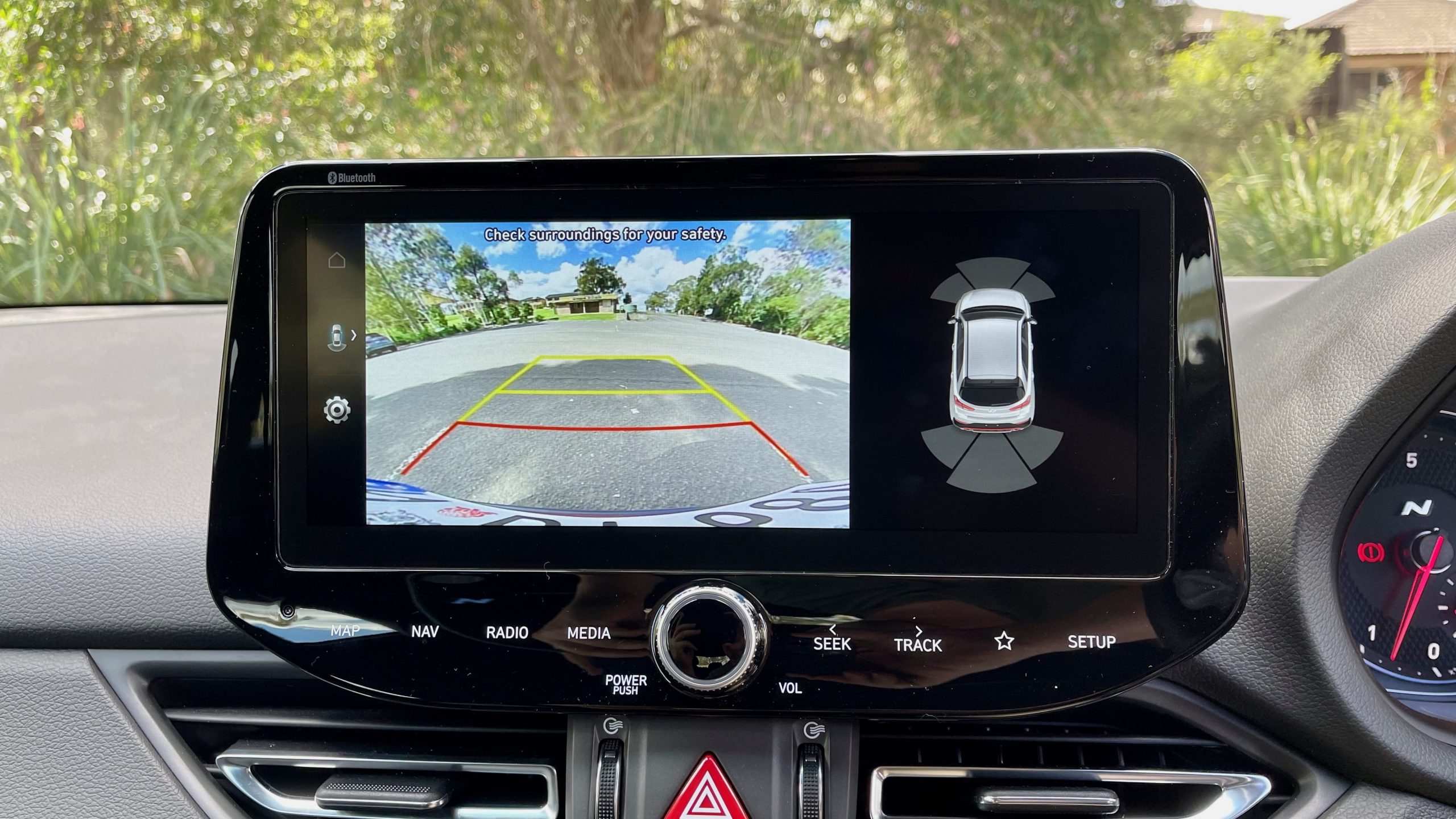
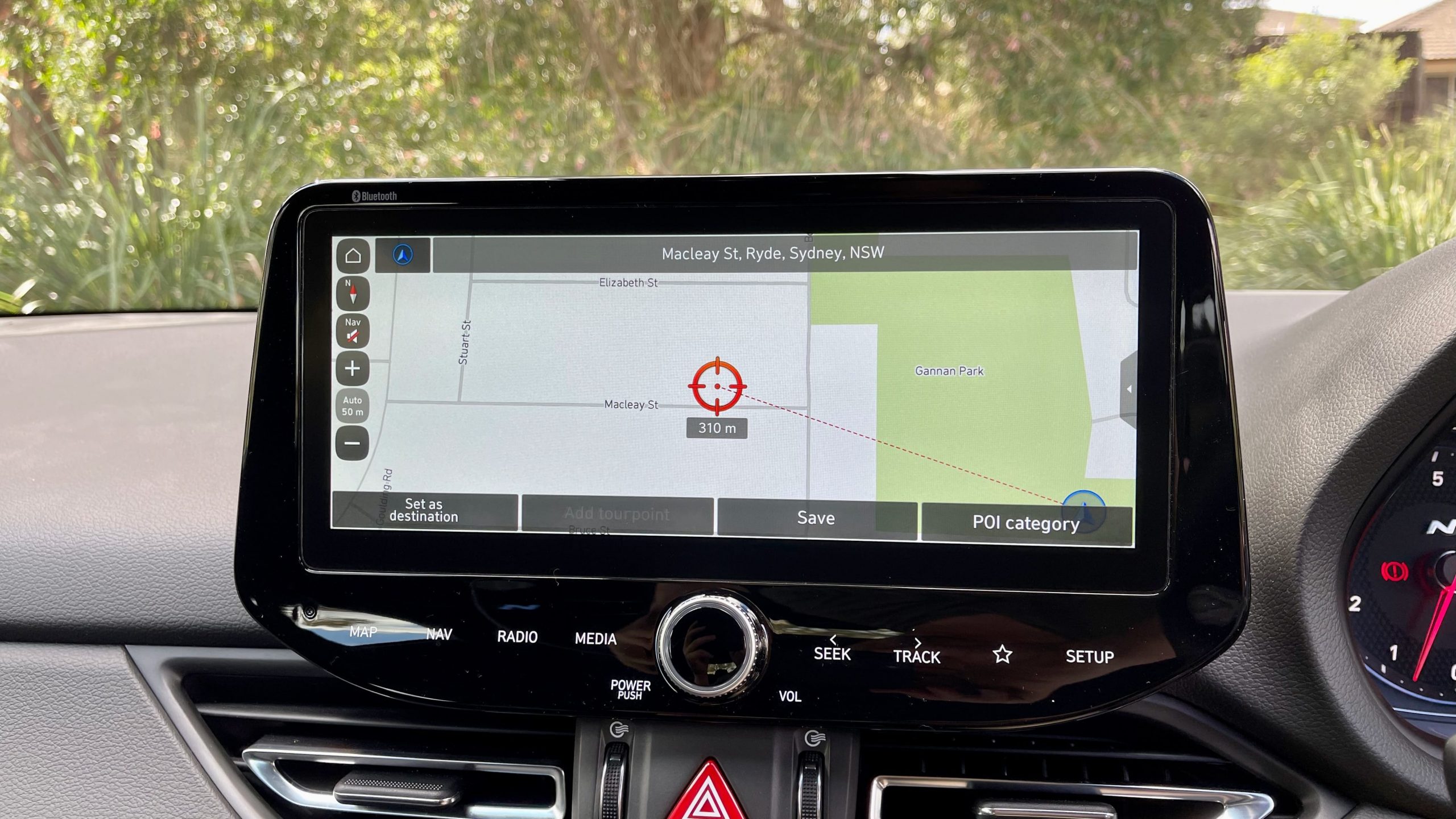
By far, we think the new seats are the centerpiece of the show inside – trimmed in leather and alcantara, they hold occupants in perfectly, especially through tight corners. Impressively they’re also easy to settle into and feel just fine during ordinary driving, too. The illuminated ‘N’ logo looks the business too at night.
The storage on offer in the i30 Fastback N is decent, but basic. Deep door pockets, a generous centre console cubby, a reasonable glovebox and a space in front of the gear selector where the wireless charger is cover off the essentials.
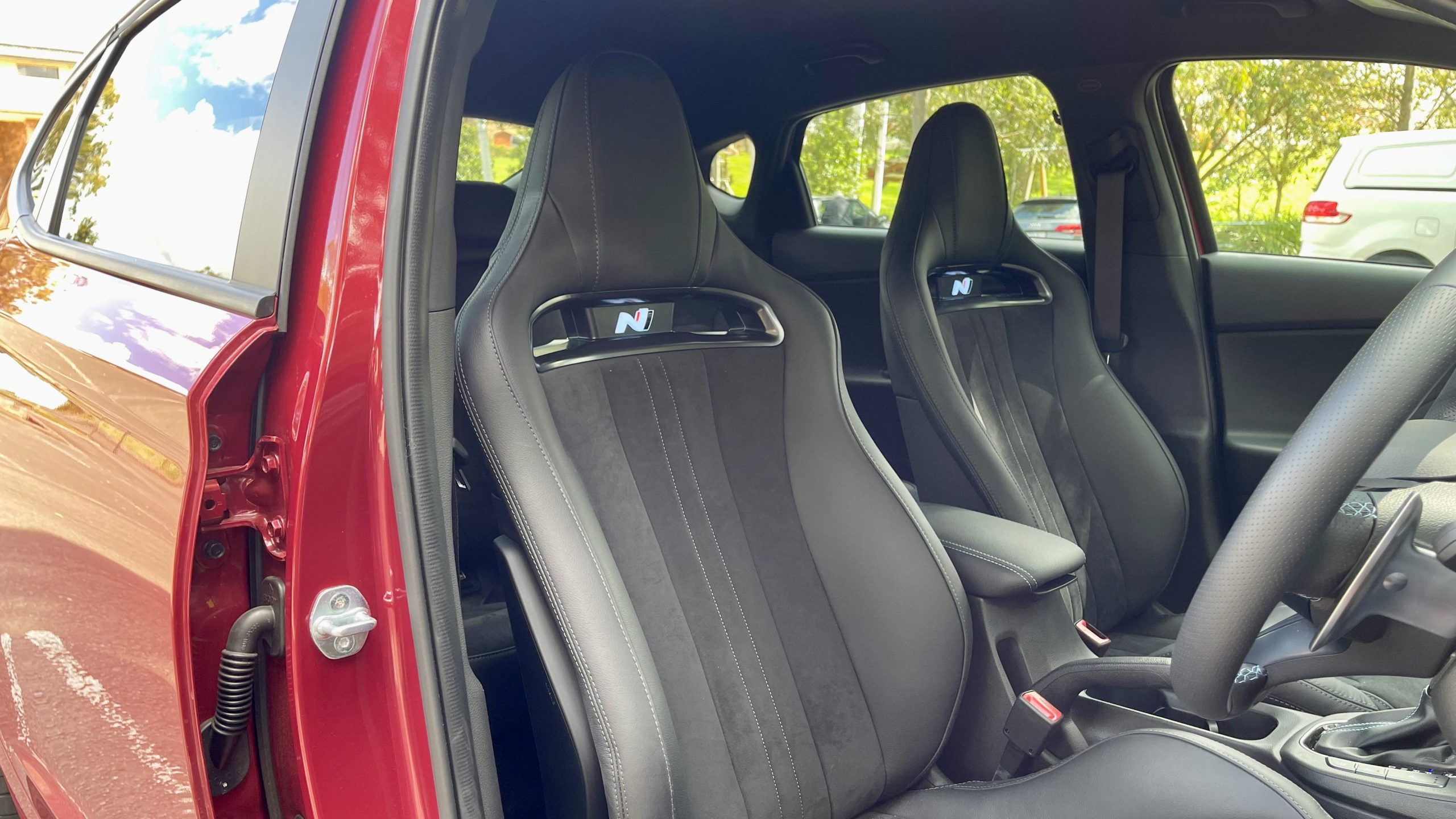
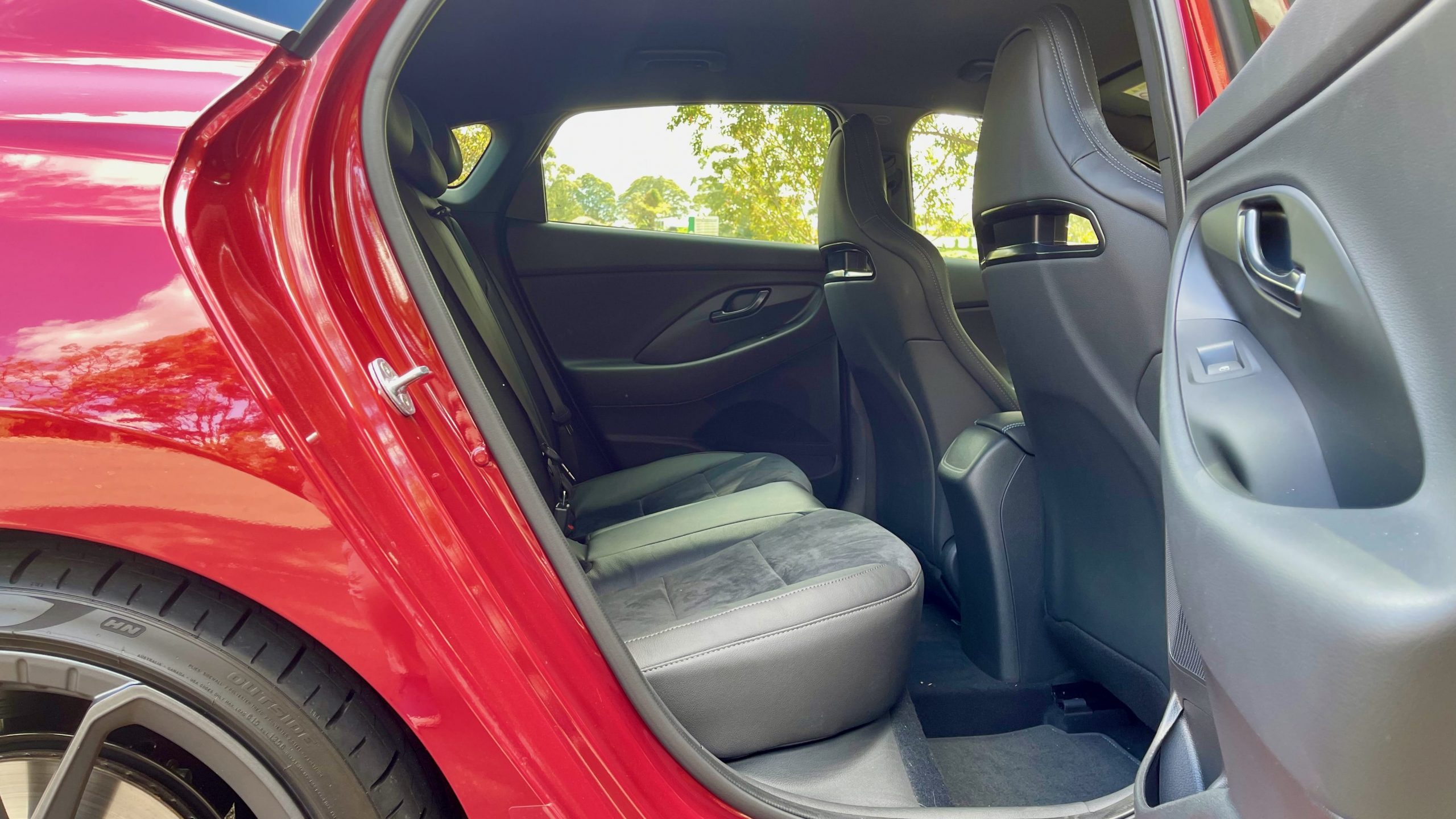
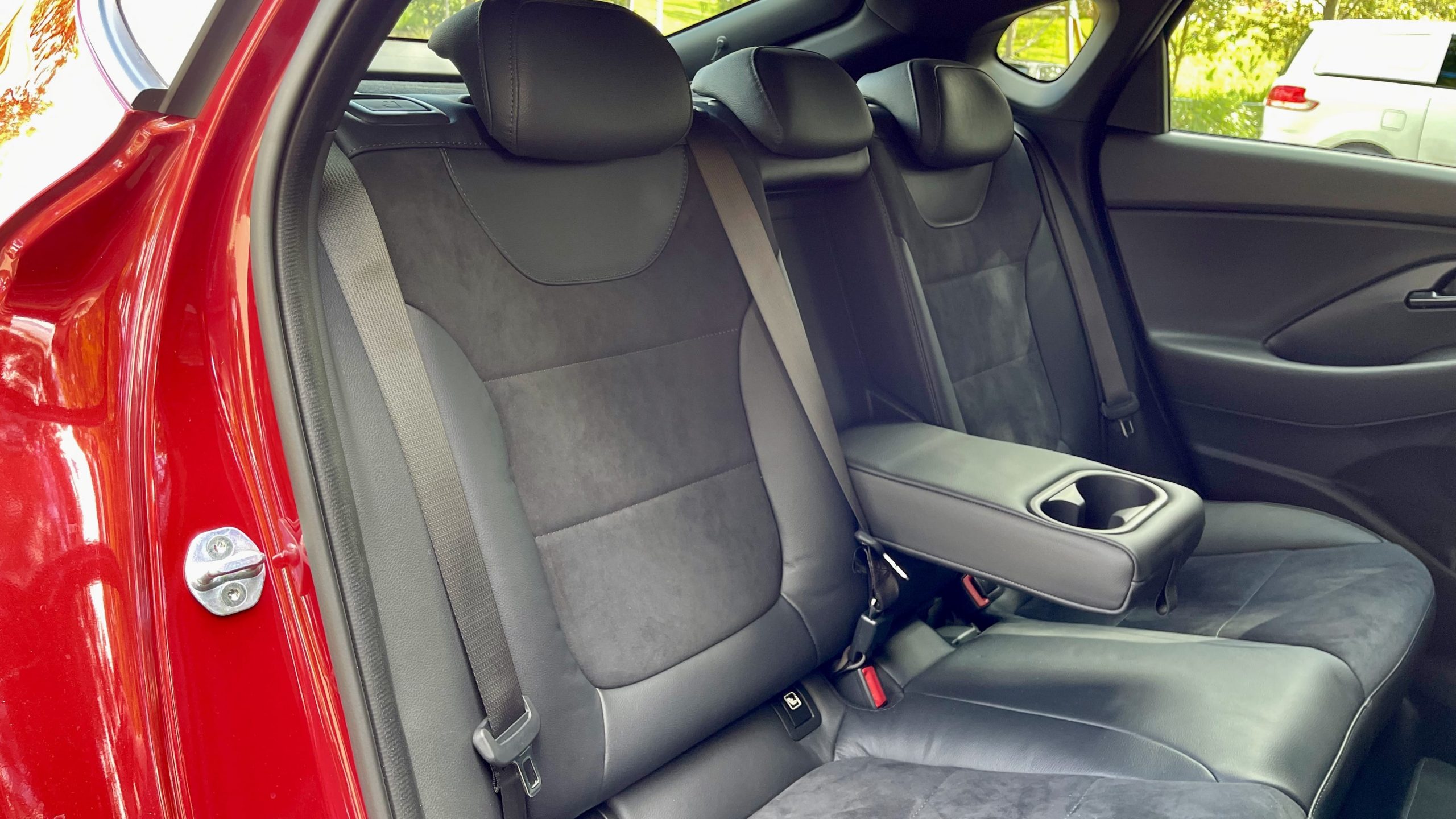
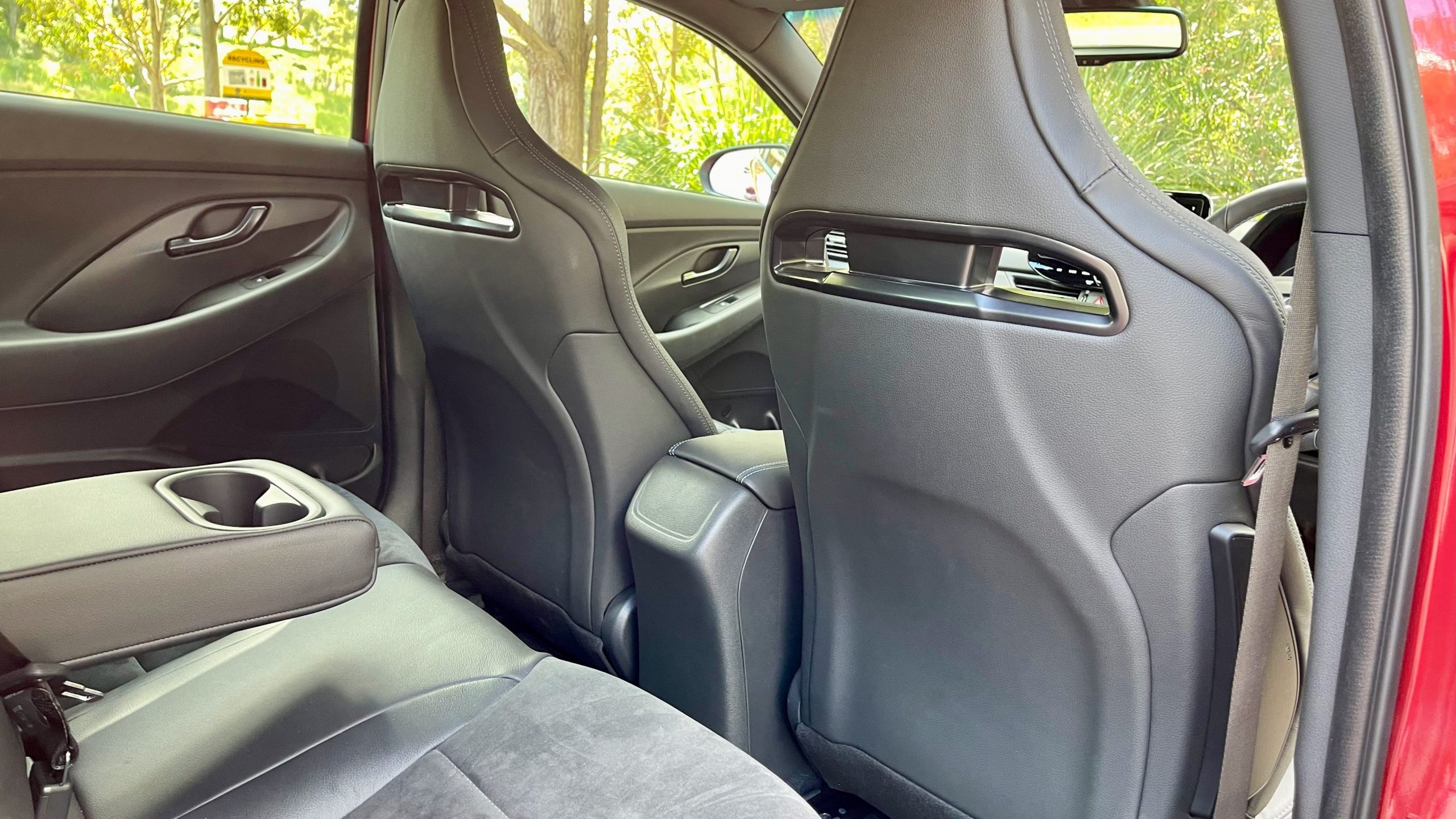
The second row of the i30 Fastback N feels a little spartan with no air vents, power outlets or even USB ports. Unlike the hatch, the Liftback slopes down past the front seats a little more, meaning that headroom starts to be limited. Leg room matches the hatch and the flip down armrest is nice to have on longer journeys, with room for two small cups in the armrest and a larger bottle in each of the door bins.
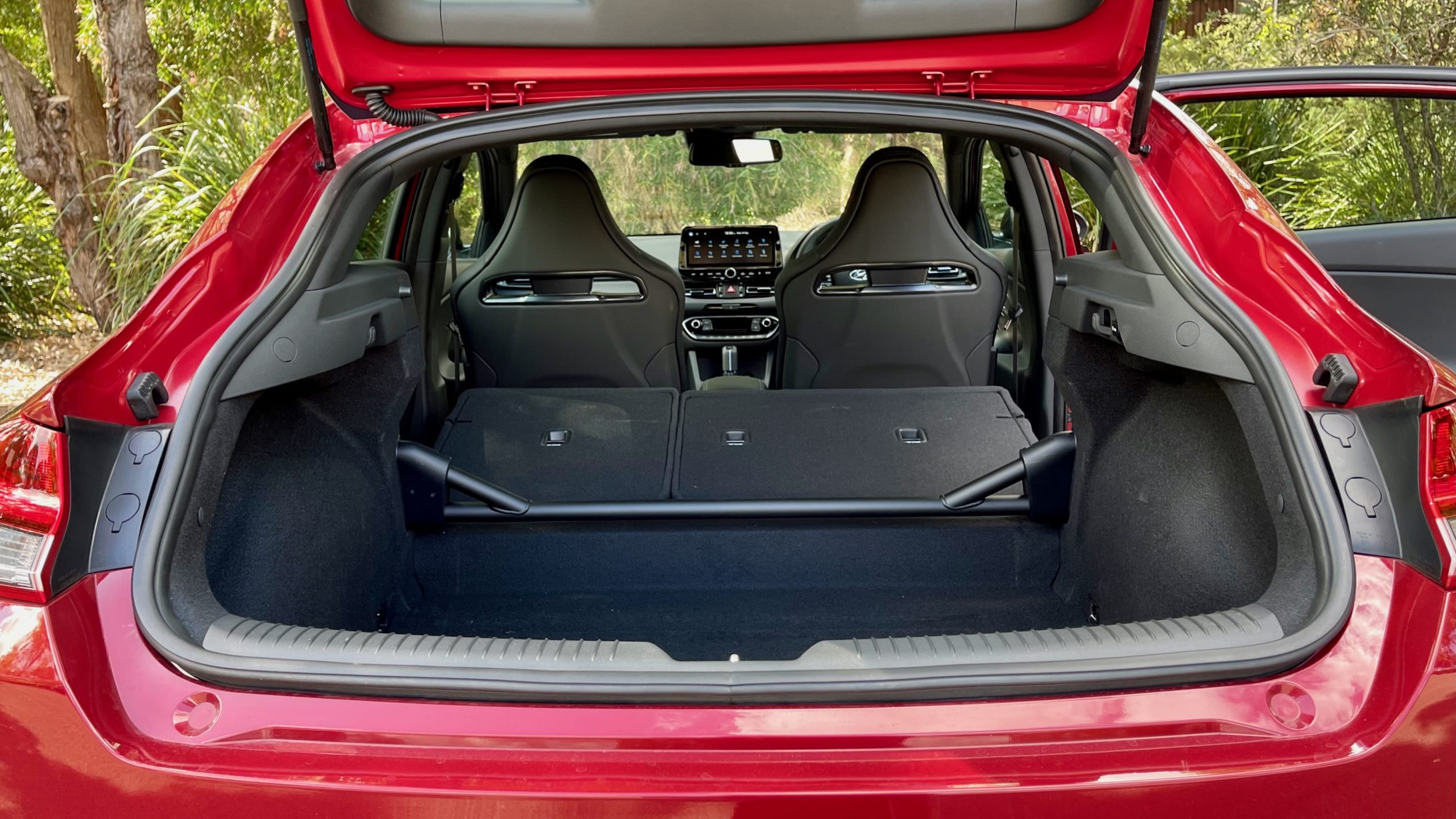
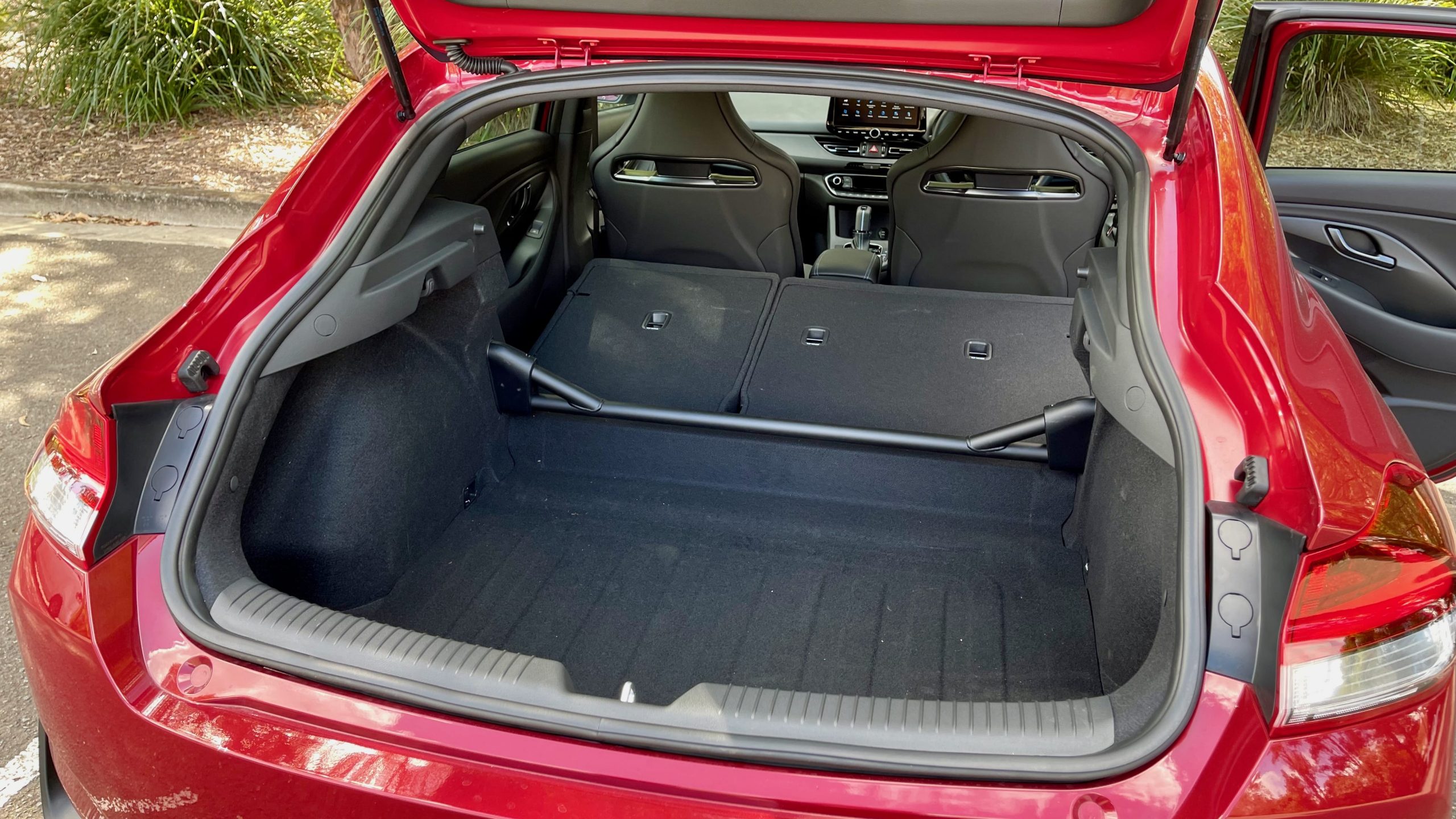
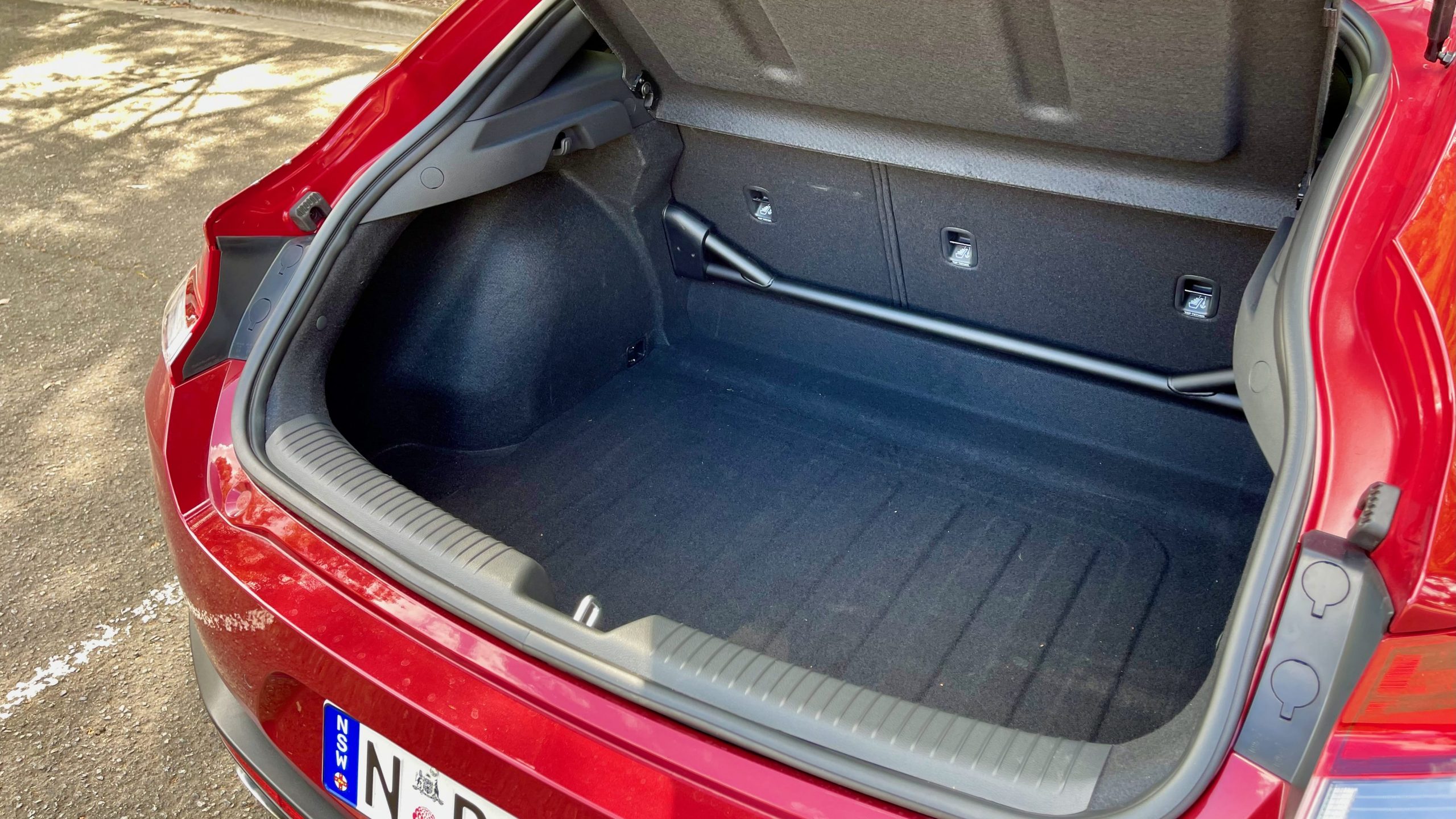
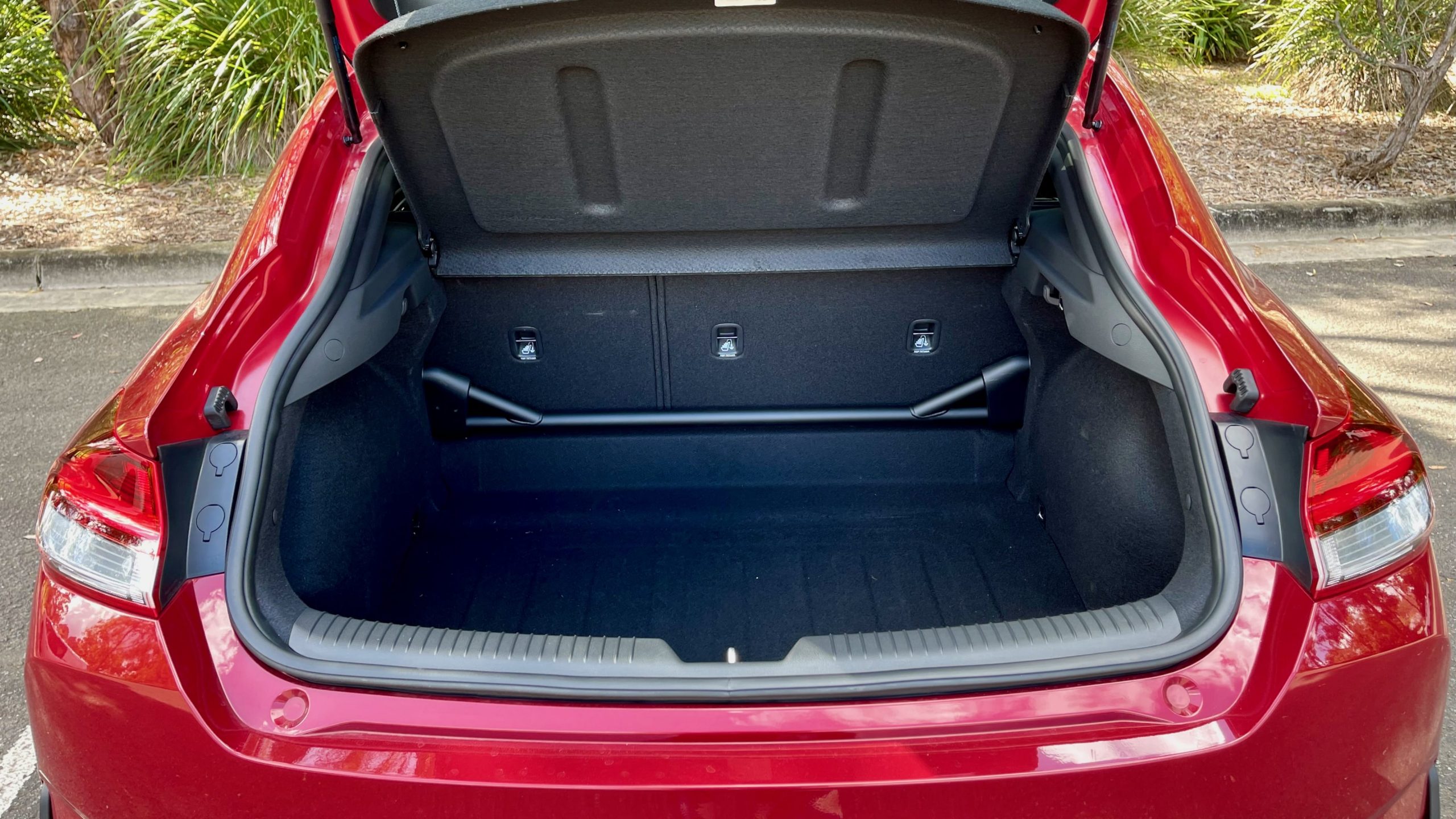
The boot is larger than the i30 N hatchback’s, coming in at a total of 436L. There is quite a large loading lip however, but other wise it is rather long and well shaped. Think of it as a shrunken Octavia liftback boot. Underneath the boot floor, you’ll find a space-saver spare and extra storage. The seats fold down to revealing 1337L of space, making the Fastback rather practical when you need it to be. The rear chassis brace we talked about above will need to be removed however. Doing so is simple, with just 2 bolts on each side.
Service and Warranty: 8.0/10
The 2022 Hyundai i30 Fastback N comes with Hyundai’s five-year/unlimited kilometre warranty. This is the same warranty term that is offered with the Volkswagen Golf GTI, Ford Focus ST and Renault Megane RS. The difference between the warranty offered by Hyundai is that your warranty will not be voided by going on track. The i30 N also comes with 12 months of roadside assist which is extended at every scheduled dealer service for up to five years in total.
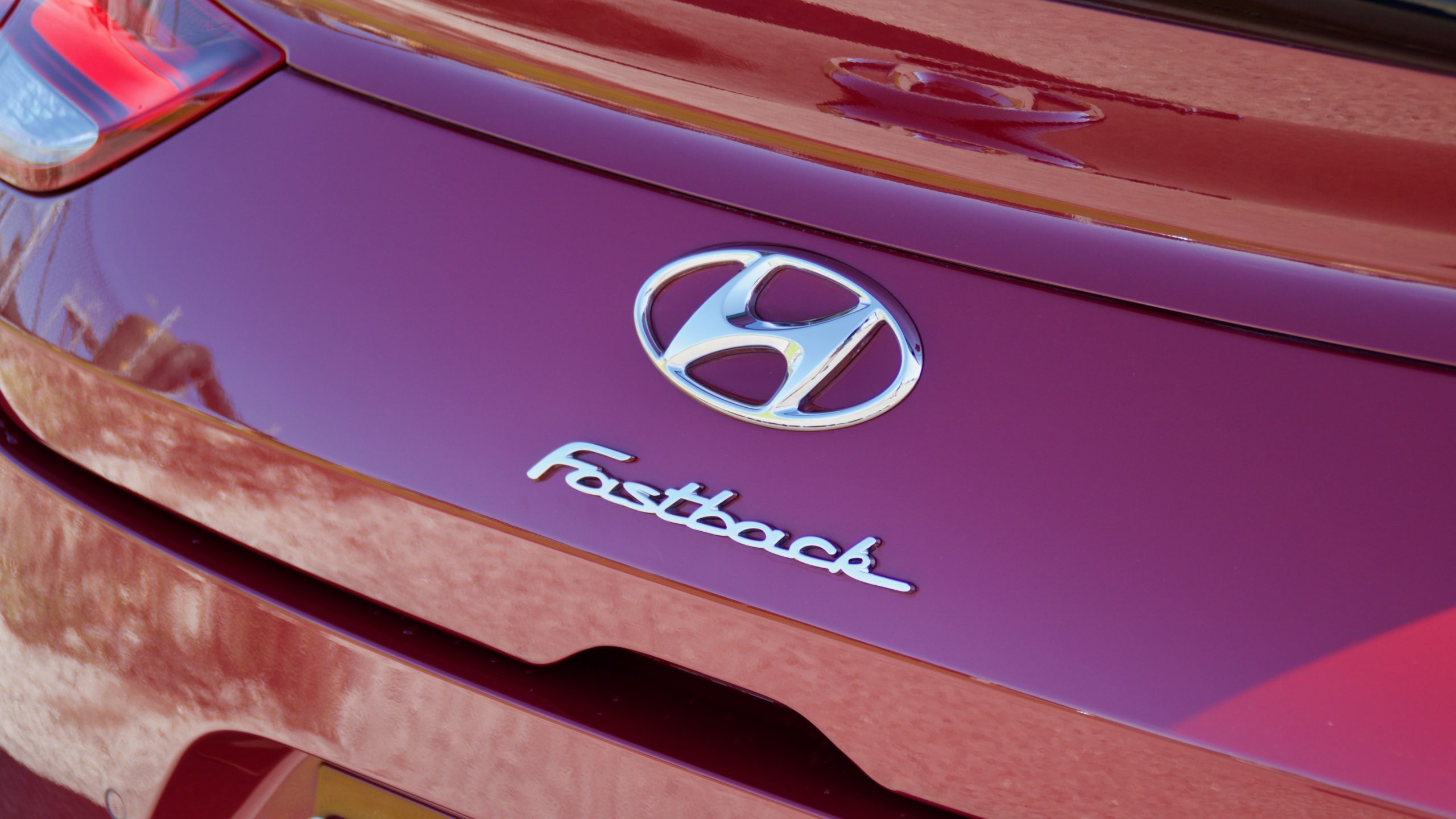
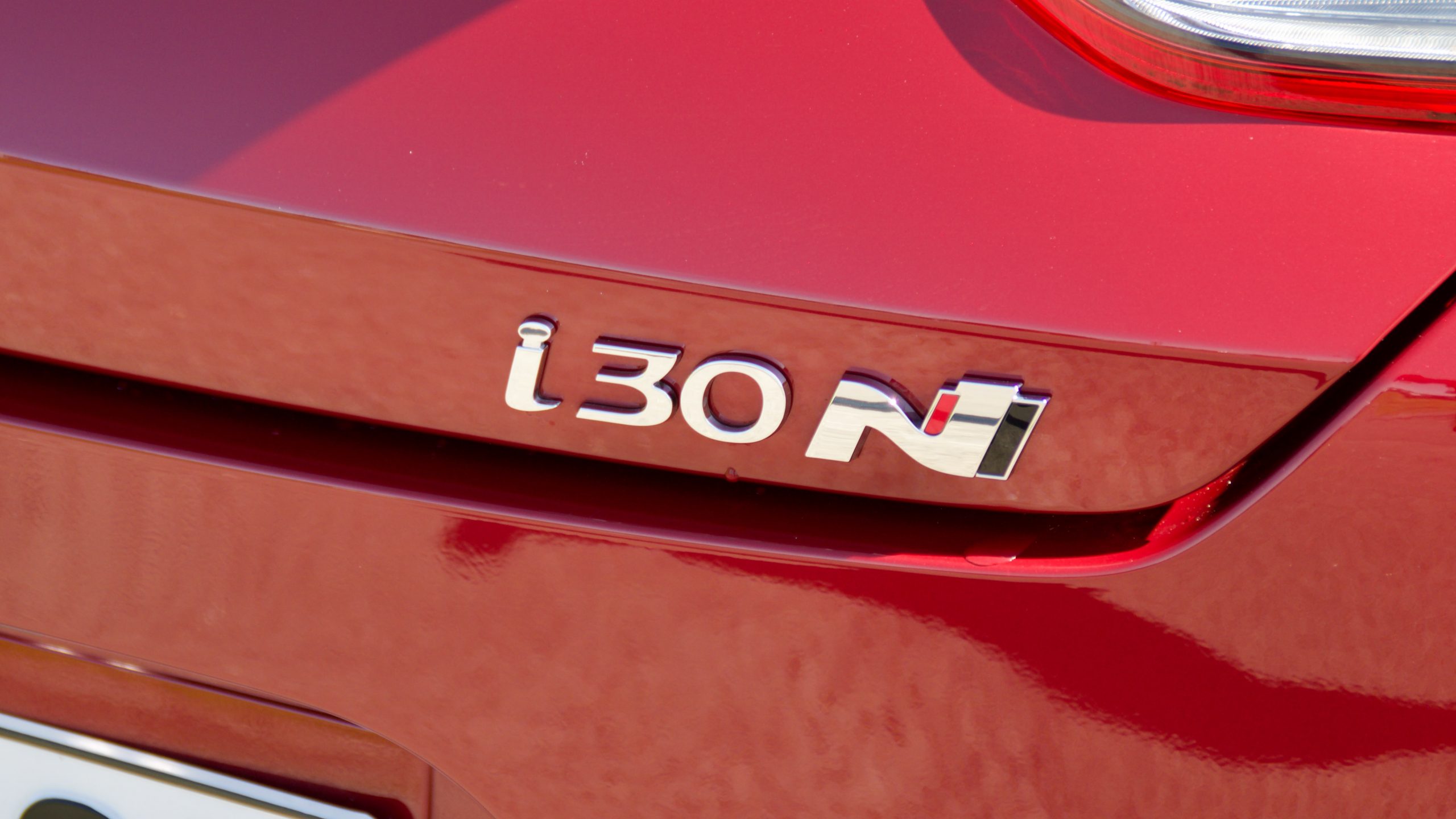
Servicing is required every 12 months or 10,000km, whichever comes first. Hyundai offers servicing plans for its i30 Fastback N which can be bought from the dealer when new. These range from $1005 for three years/30,000km, $1340 for four years/40,000km or $1675 for five years/50,000km.
2022 Hyundai i30 Fastback N DiscoverAuto Rating: 8.3/10
The 2022 Hyundai i30 Fastback N Limited Edition is another fine N-division Hyundai, proving how the far the Korean brand has come in the past 10 years in making exciting driver’s cars for enthusiasts. Few cars will be as good as any i30 N on a backroad, and this Fastback, in both manual and automatic is the perfect tool for carving up a country back road.
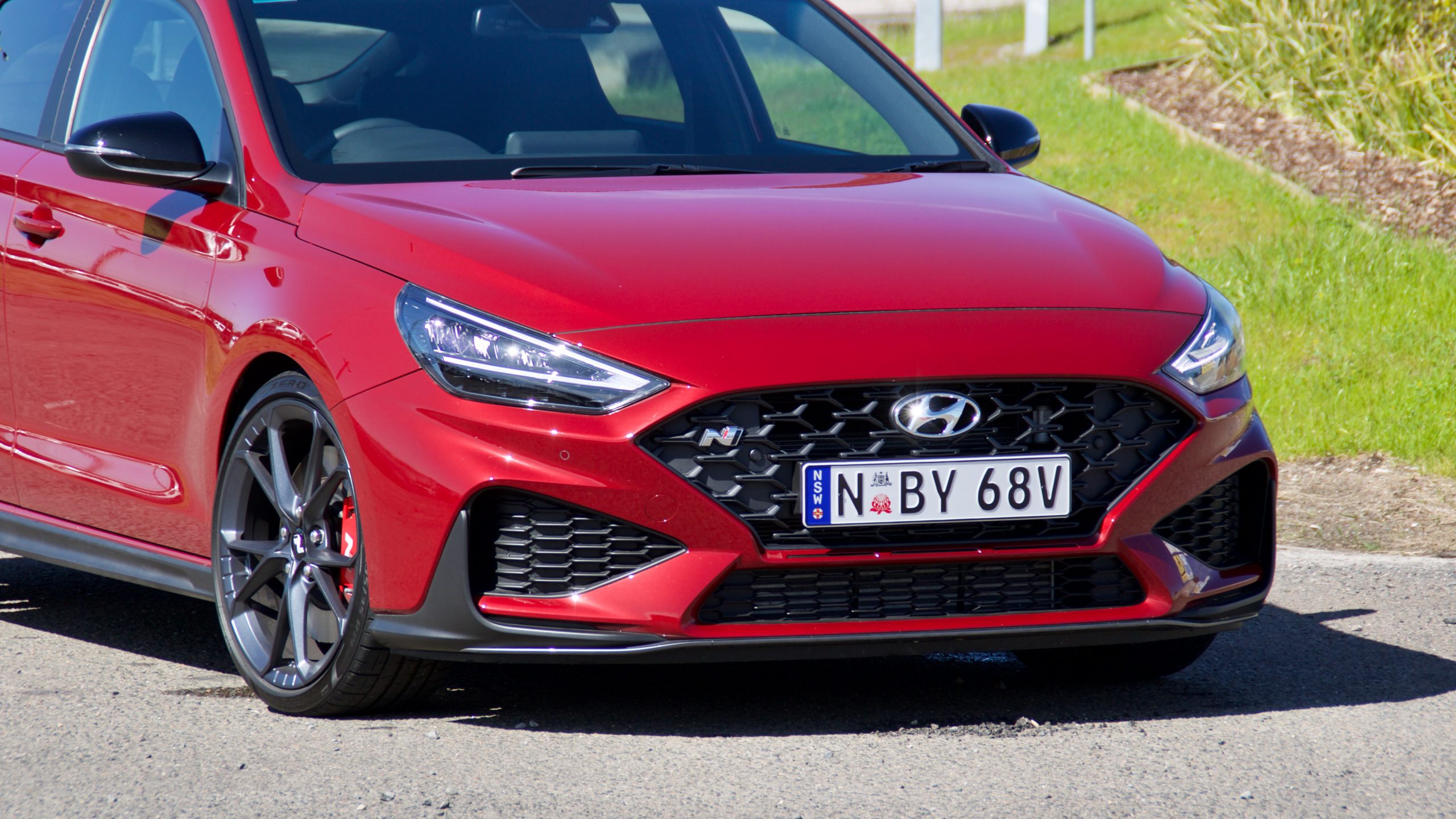
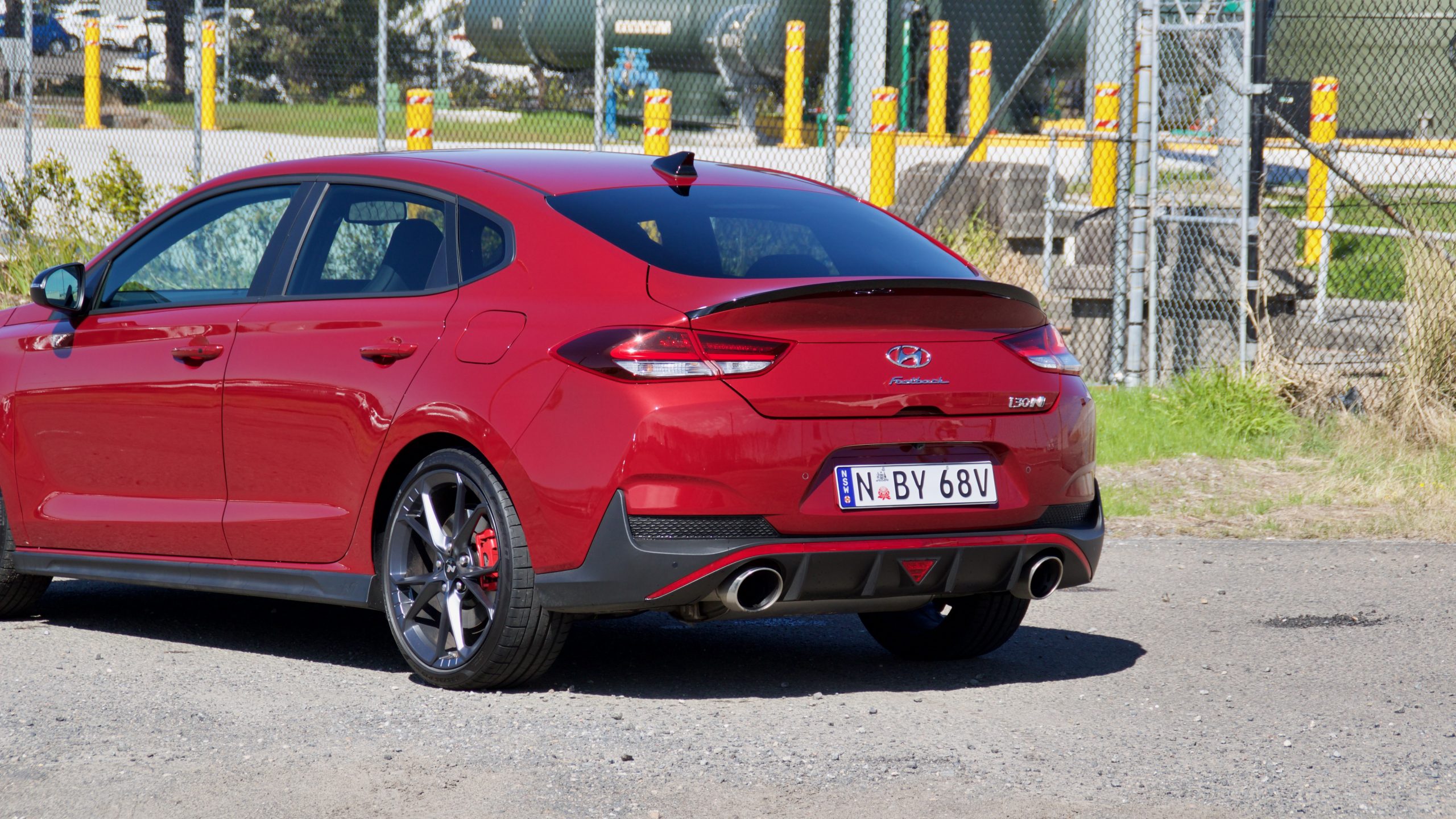
Coming in under $50,000 before on-road costs, with its rather suave liftback style and exclusivity compared to the i30 N hatchback, the i30 Fastback N is a car that should be on your shopping list if you’re after something a little raw and exciting. It might not be perfect with its spartan interior and axle tramp antics off the line, but the Fastback feels bespoke, special even. For that reason alone, it deserves to be on your shopping list.
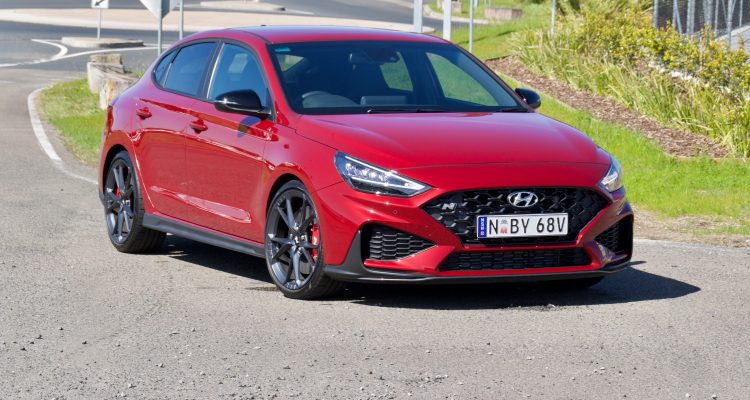
Leave a Reply